Last year I went to Africa in June. Their dry season. When all the green fades away and only shades of beige and golden hues remain. I was co-leading groups of undergraduate students who were eager to learn wildlife tracking and skills in collecting observational data on the Big Cats of Kruger National Park. Over the course of a month, we saw 101 lion, 33 leopard, and 7 cheetah, among a plethora of other fantastic african wildlife. I felt I had nearly seen it all.
This year, visiting Africa during the December wet season, proved to be equally spectacular but in a different way. The bush had become thick with green Mopani leaves and grasses extending all lengths. This cover allowed animals to better hide but despite the density of green, I was still impressed with the amount of wildlife we saw. Lions, leopards, elephants, and hippo. We did not go home feeling any sort of lack.
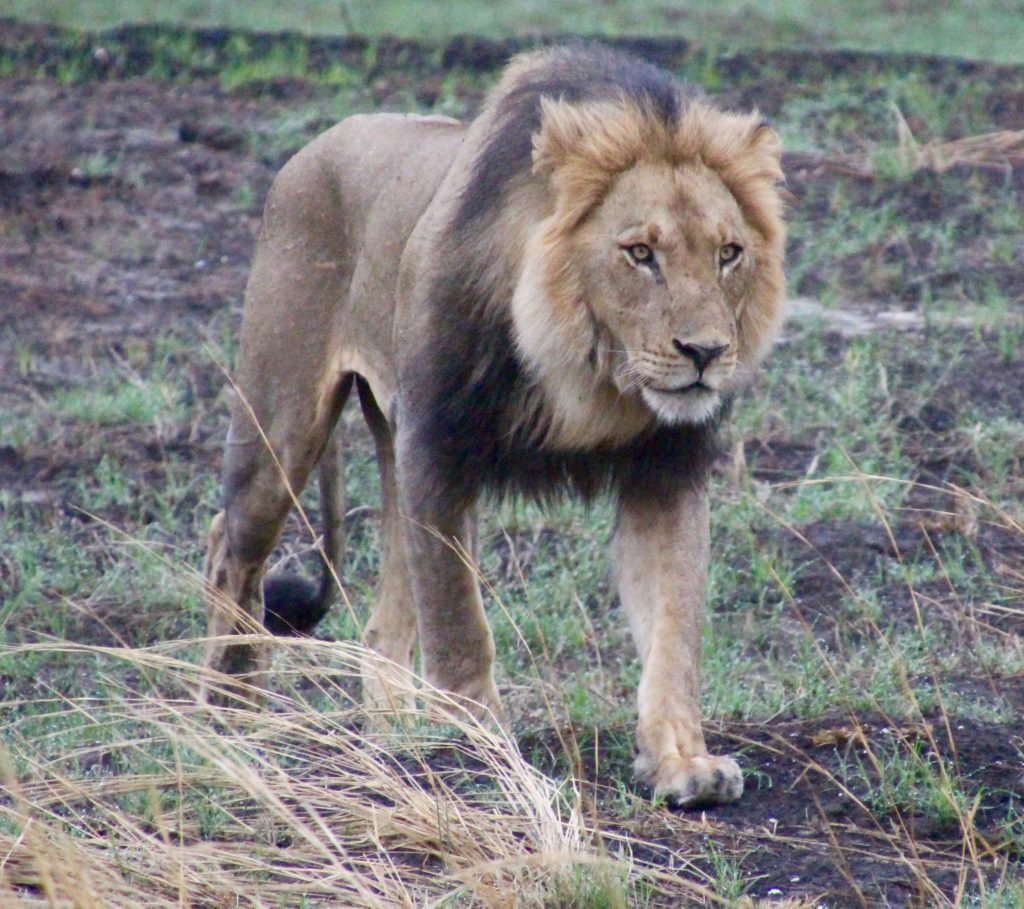
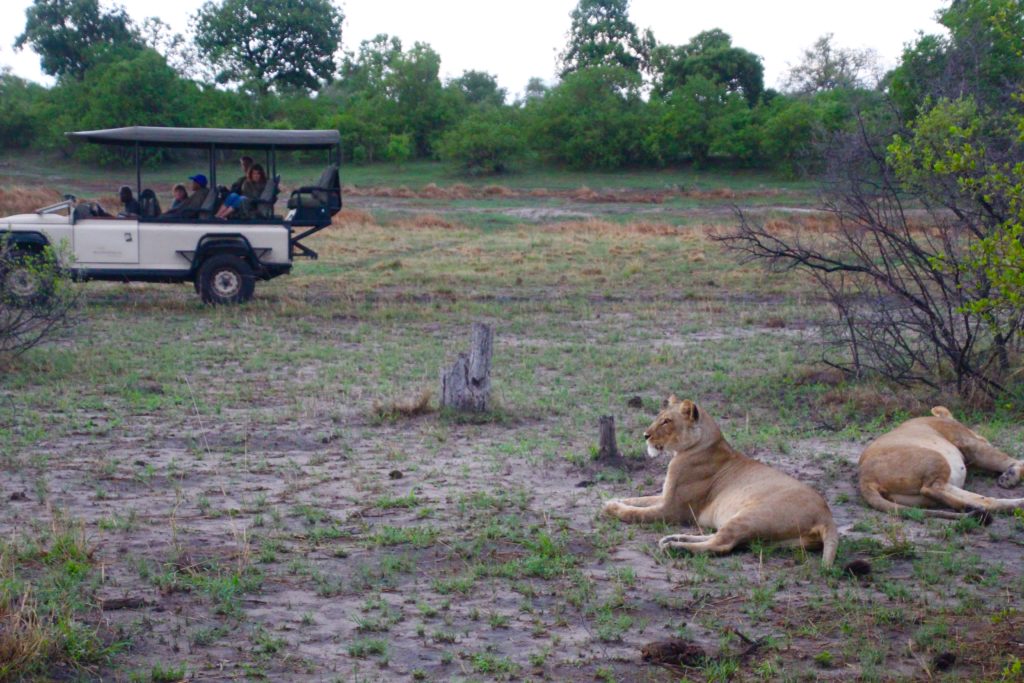
Early one morning, we sat with two female lionesses. “Lions are lazy,” the guide said to us. “They lie around all day sleeping and only hunt when they have to.”
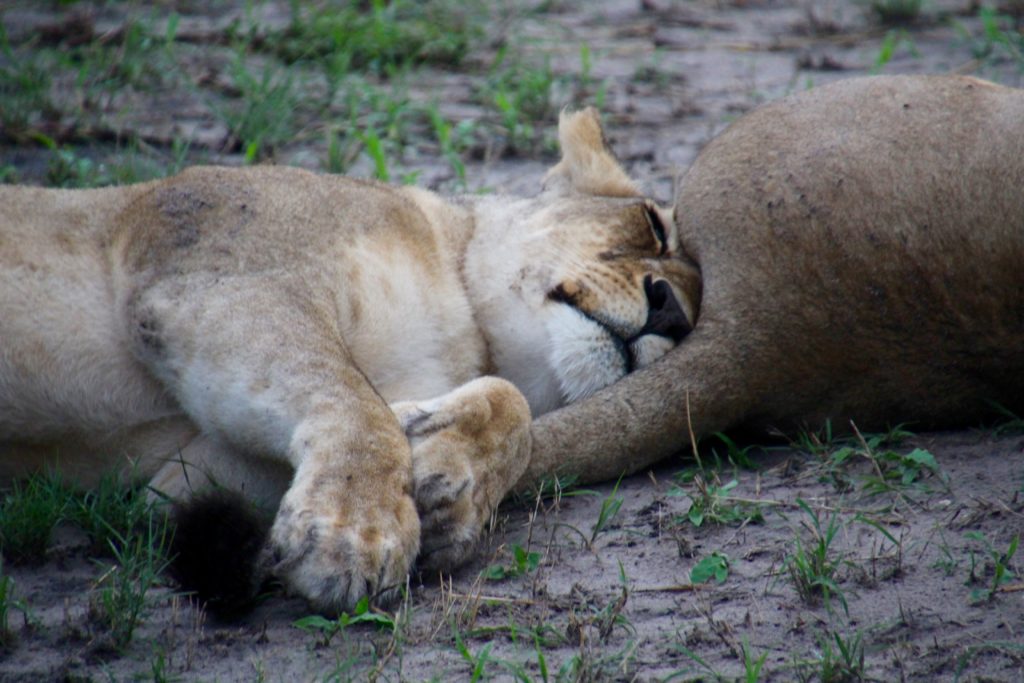
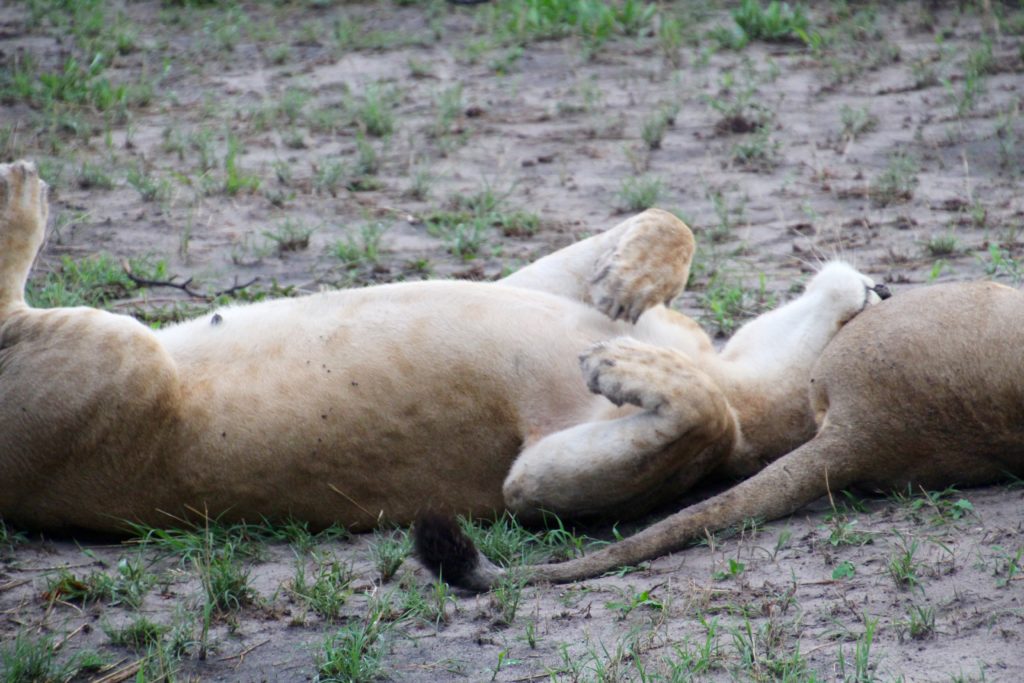
It sure seemed that way to us. Female lions are a pride’s primary hunters. They often work together to take down prey such as zebra, antelopes, and wildebeest. These lazy lionesses sure didn’t seem to be planning for any such activities that day.
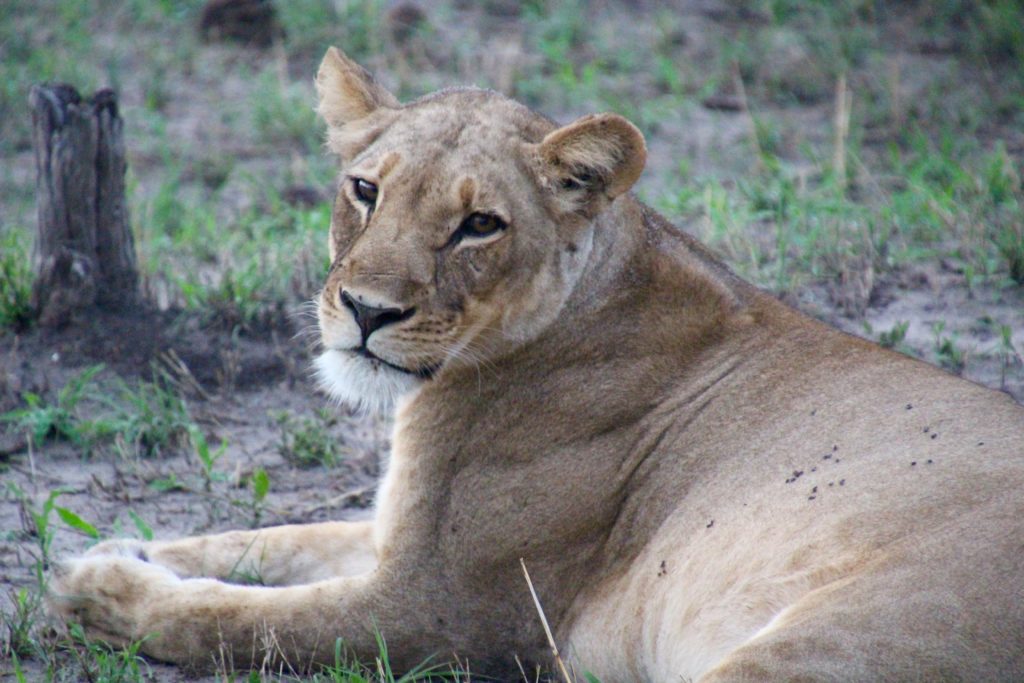
Most of the time we saw lions, we either saw two brothers, two sisters, or a male and a female mating. The average size of a lion pride consists of five or six females, their cubs, and one or two males living in a family unit. Extremely large prides are not typical, although last year, we did count a group of 29 individuals living together in Kruger National Park.
Lions are the only cats to live in social groups, and all of a pride’s lionesses are related. Female cubs typically stay with the group as they age, but young males eventually leave and establish their own prides by taking over a group headed by another male.
The story of one particular male roaming the area near Savuti had a sad beginning. Mr. Lion and his brother were a team. But one day, Mr. Lion met a Ms. Lion and the two went off to enjoy each other’s company. As a typical mating cycle lasts about three days, with the mating ritual taking place almost every 20 minutes, up to 40 times daily, the two would be busy for quite some time. Brother lion was left to wander by himself.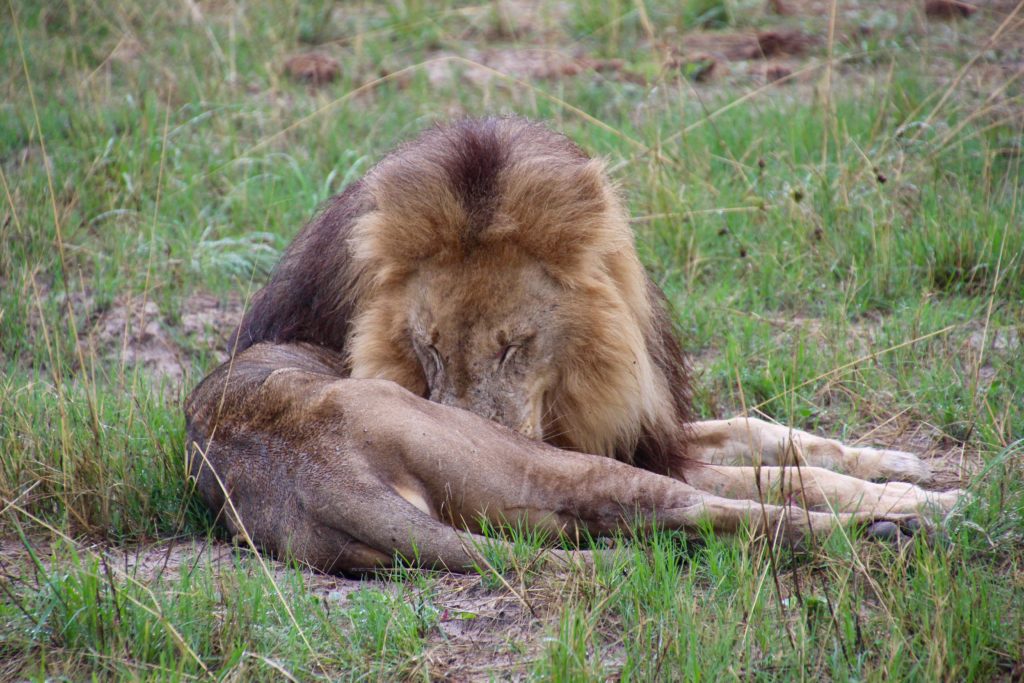 Alone and unguarded, Brother lion ended up getting into some trouble. A band of three other brother lions roaming the area challenged him to a fight. Without the help of his brother, he was no match for the three males and unfortunately did not survive the attack.
Alone and unguarded, Brother lion ended up getting into some trouble. A band of three other brother lions roaming the area challenged him to a fight. Without the help of his brother, he was no match for the three males and unfortunately did not survive the attack.
Mr. Lion had no idea this was happening. However, once the days had passed, and Ms. Lion’s interest wained, Mr. Lion went looking for him.
Nowhere to be found.
He called, and called. Through the night and day.
The guides suspect he eventually figured out his brother wasn’t going to come back. Without him, Mr. Lion wasn’t able to effectively hunt. They watched him slowly lose weight as time went on, and renamed him Mr. Skinny.
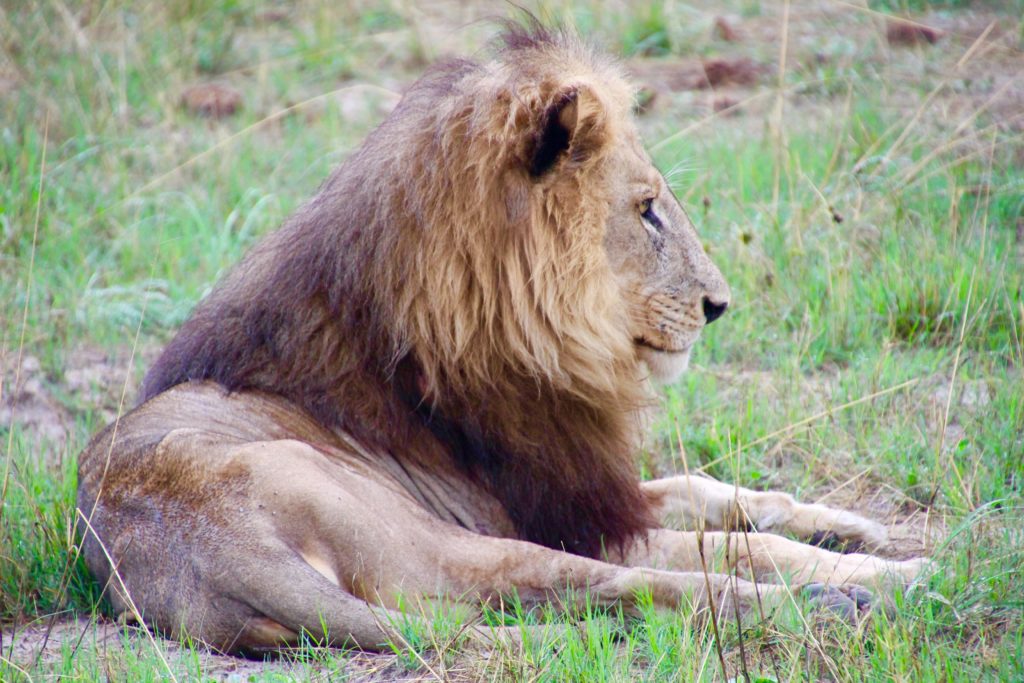 Each time we saw him, he barely moved. In the heat of the sun, you’d suspect he had died. Every now and then, though, he would stir, roll around, and clean himself off.
Each time we saw him, he barely moved. In the heat of the sun, you’d suspect he had died. Every now and then, though, he would stir, roll around, and clean himself off. 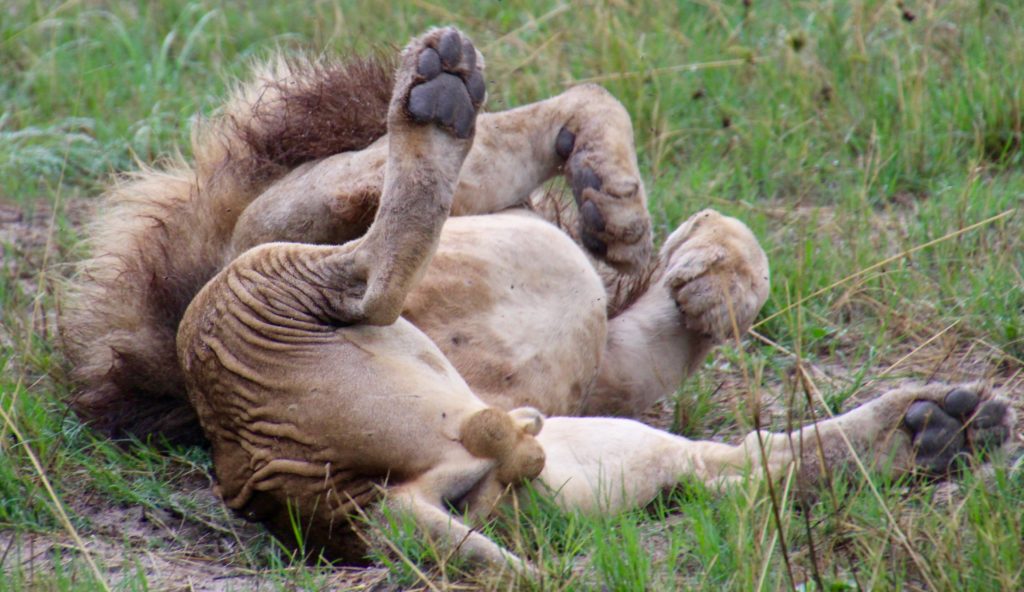
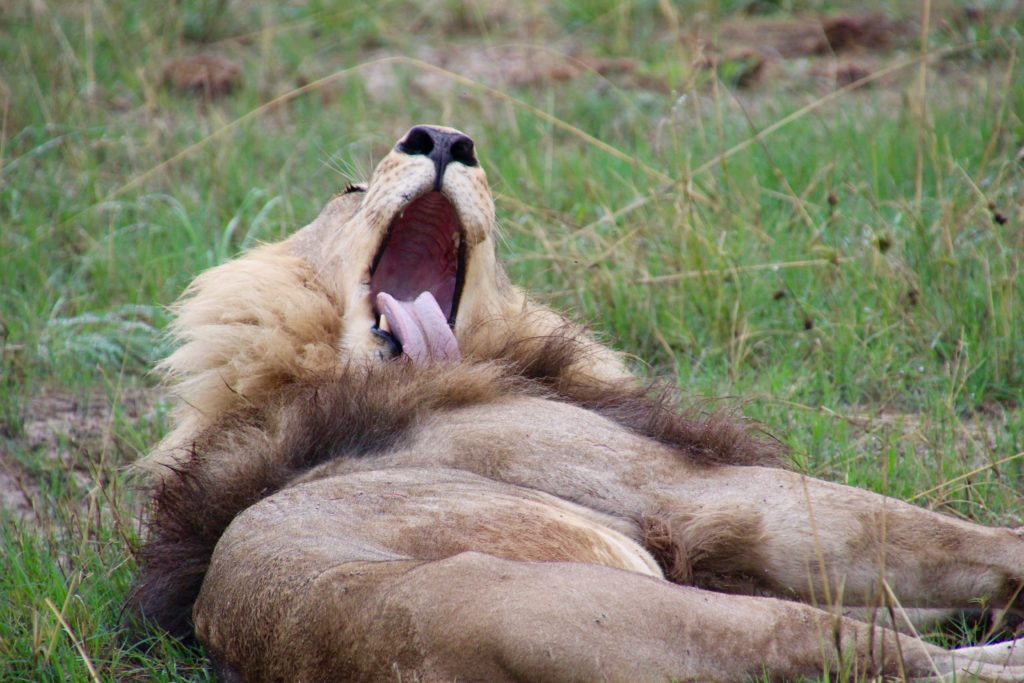 Then one evening, just before dusk, we saw Mr. Skinny in a rather peppy mood. We weren’t sure what was going on at first, but then we saw. Ms. Lion had returned. At first, she seemed rather annoyed he had started to follow her. She ran ahead, and he continued to slowly trot behind.
Then one evening, just before dusk, we saw Mr. Skinny in a rather peppy mood. We weren’t sure what was going on at first, but then we saw. Ms. Lion had returned. At first, she seemed rather annoyed he had started to follow her. She ran ahead, and he continued to slowly trot behind.
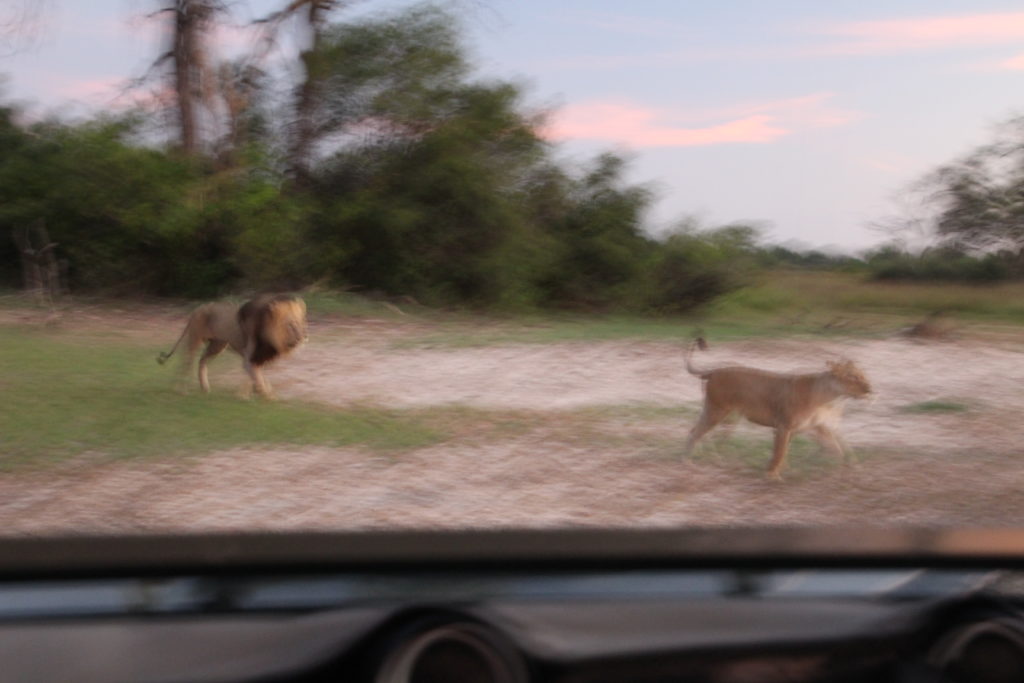 It became clear he was too weak to catch up with her. Exhaustion took over, and he lay down to catch a break. Surely Ms. Lion would be on her way?
It became clear he was too weak to catch up with her. Exhaustion took over, and he lay down to catch a break. Surely Ms. Lion would be on her way?
Nope! She came back to him, rubbed her face against his, encouraging him to stand up and continue after her. We watched as she played a flirtatious game of catch-me-if-you-can far into the sunset, past the hour of visibility to capture any of it on camera.
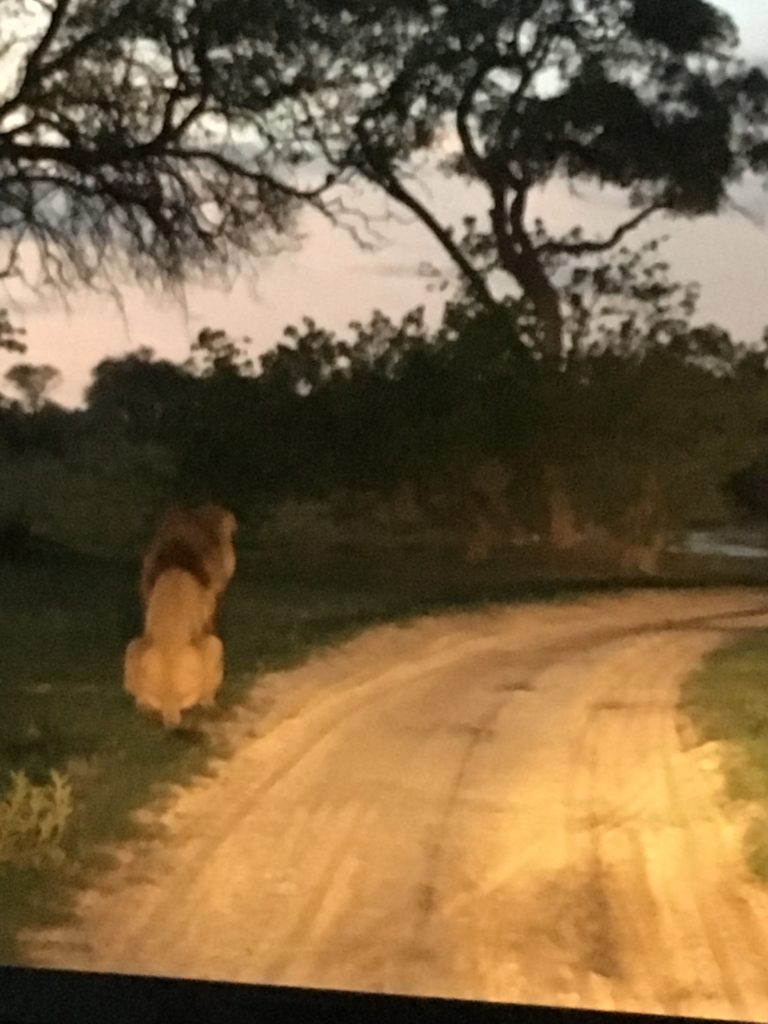
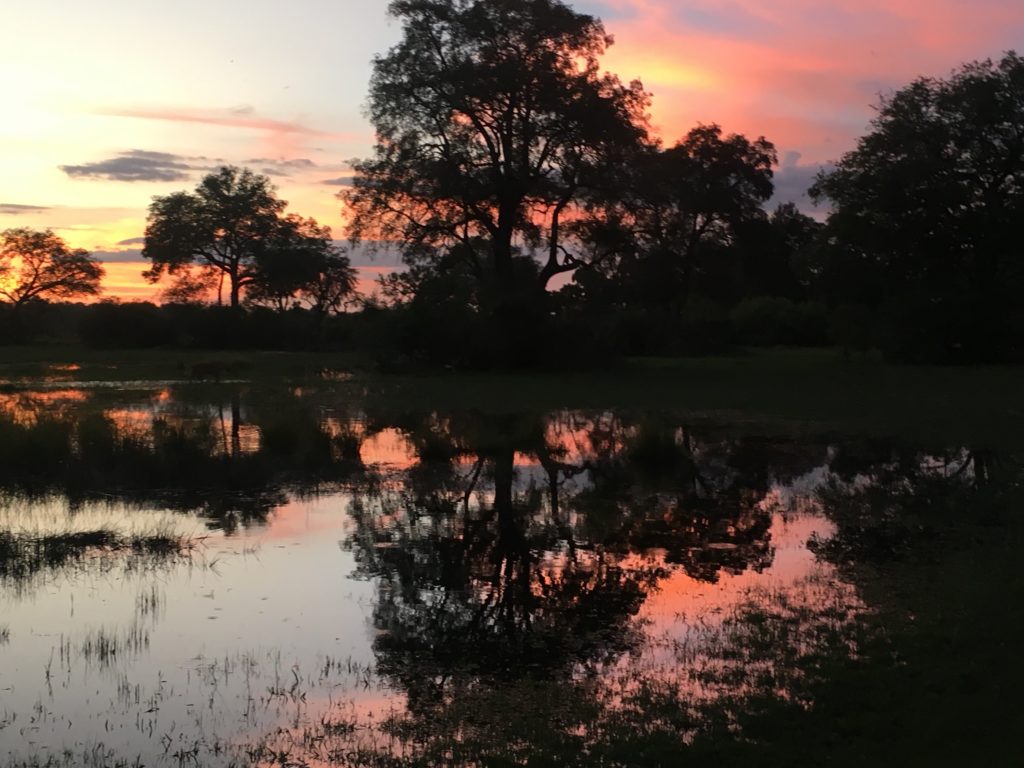 The guides were optimistic that Mr. Skinny could recover. Although, with the band of three brothers still roaming around and a flirtatious female visiting them all, his chances would be slim unless he stayed well hidden from the other males.
The guides were optimistic that Mr. Skinny could recover. Although, with the band of three brothers still roaming around and a flirtatious female visiting them all, his chances would be slim unless he stayed well hidden from the other males.
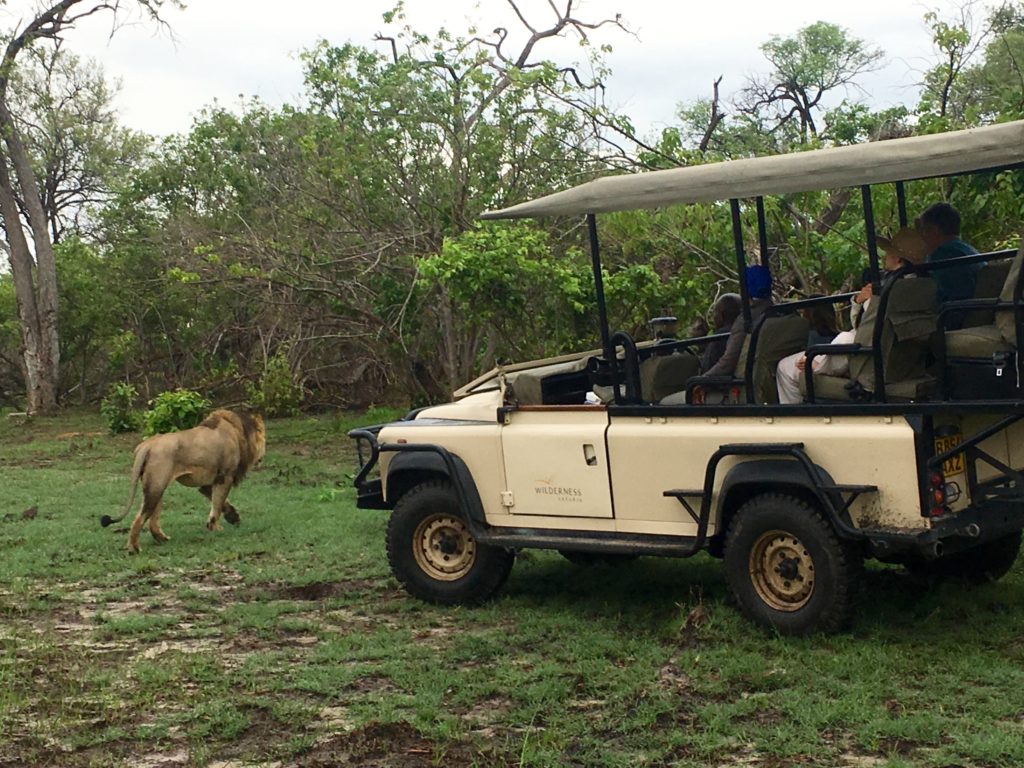
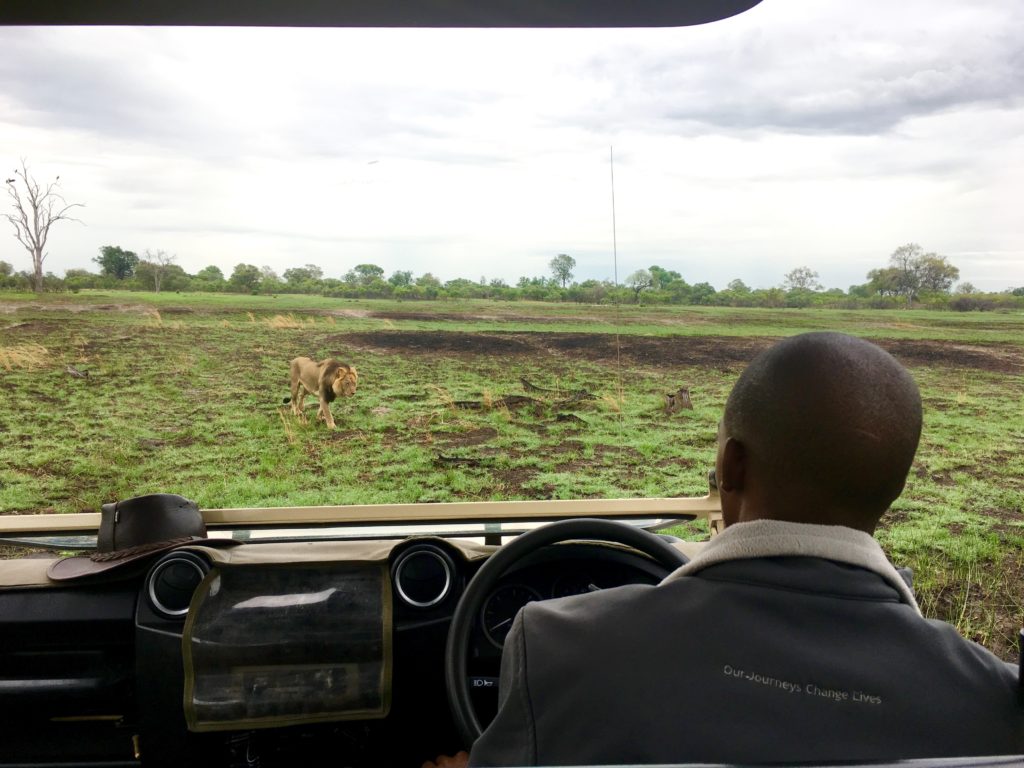 Each day our schedule was full of adventure, food, and relaxation.
Each day our schedule was full of adventure, food, and relaxation.
Morning started with the 5:00 a.m. wake up call. At 5:30 a.m. we piled into the car for our first game drive of the day. At 9:30 a.m. we would find a nice place in the field to stop and have coffee and biscuits before continuing our drive.
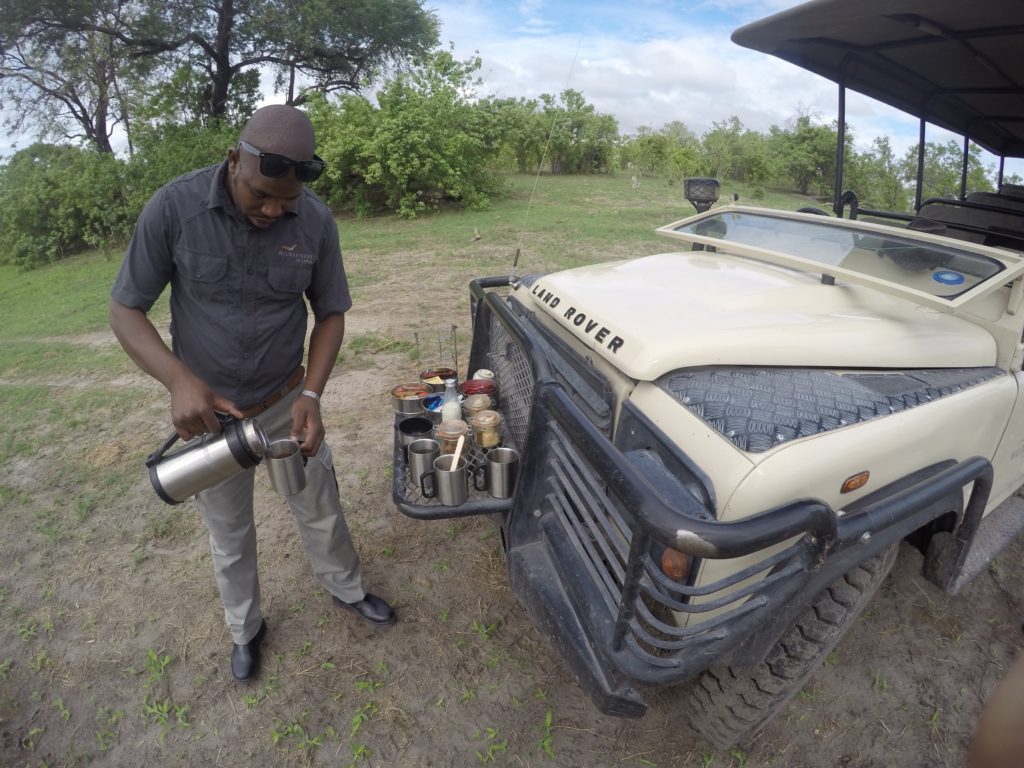
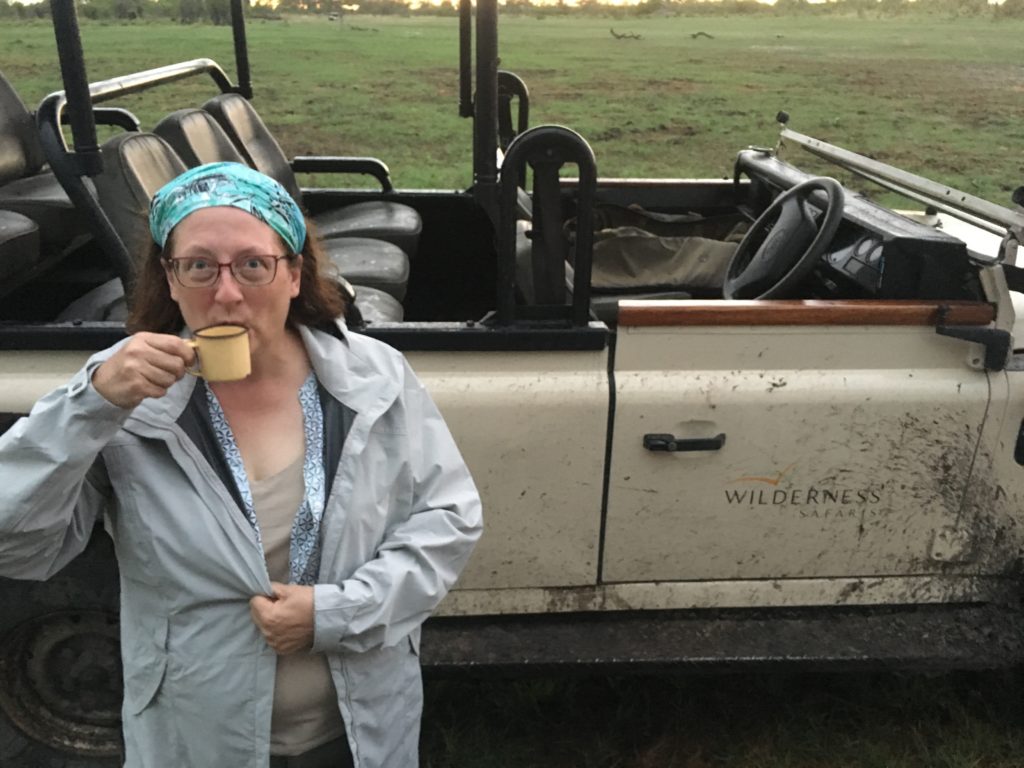
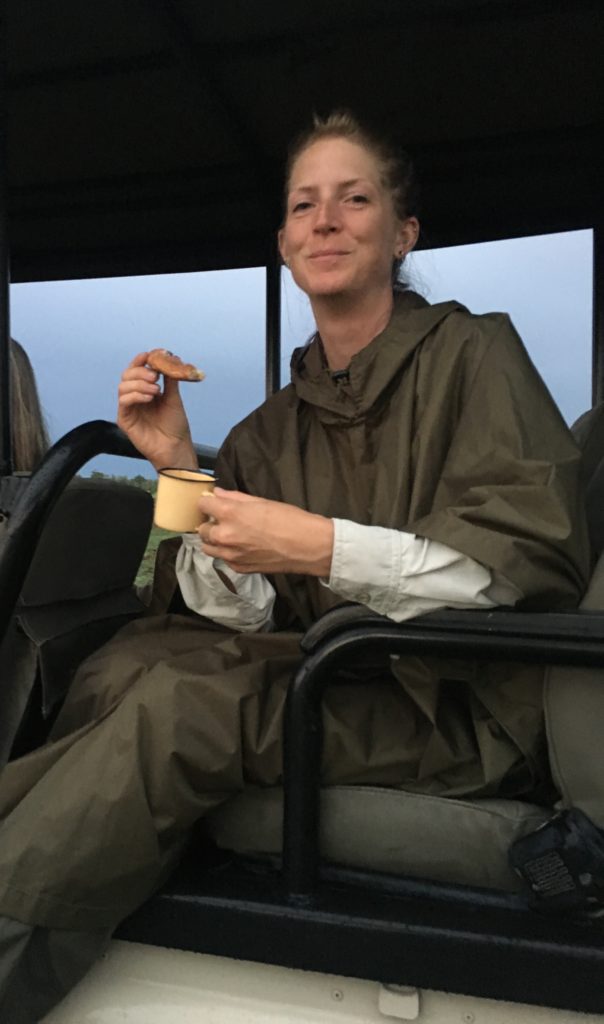
By 11:00 a.m., we returned back to camp for breakfast with the staff and a lively recap of the morning’s sightings.
“The bar is open if anyone wants something to drink,” the host Sally announced!
“Join me in some champagne,” Eva, the German/South African would chime. Why the heck not?! We were on vacation, after all, and we had the best seats in the house!
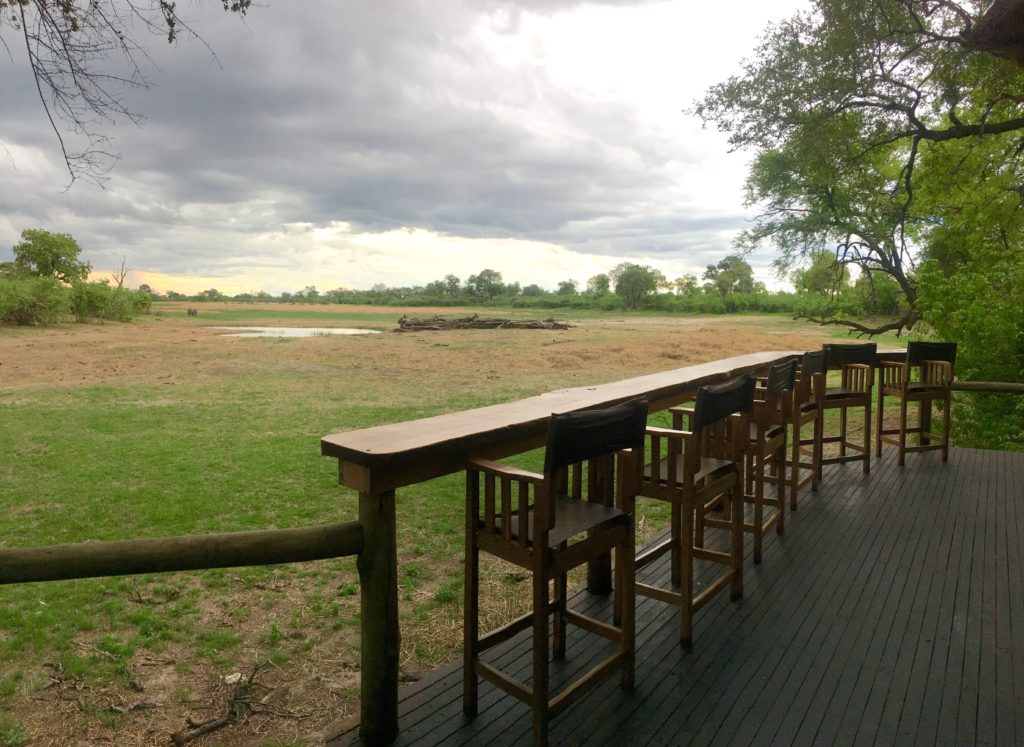
After breakfast, we had a break in the day. Siesta time until 4:00 p.m. A perfect span of time to relax, journal, and nap. I don’t know if it was the heat of the day, or the fact we woke at 5:00 a.m., but a nap always happened.
Temperatures during December never got too cold, hovering between 60-80*F throughout the day. In June, nights would drop to 46*F and rise to 97*F by midday, so packing layers was crucial, however this time around, I never used my gloves nor hat.
At 4:00 p.m., we sauntered out to the main lodge where we sipped tea and nibbled on delicious snacks. All of the food prepared at Wilderness Safari camps was incredible.
At 4:30 p.m., we again piled into the car to begin our afternoon game drive. Every day we stopped at sunset to enjoy “Sundowners”, really just an excuse to drink and enjoy the colors of light playing off the landscape.
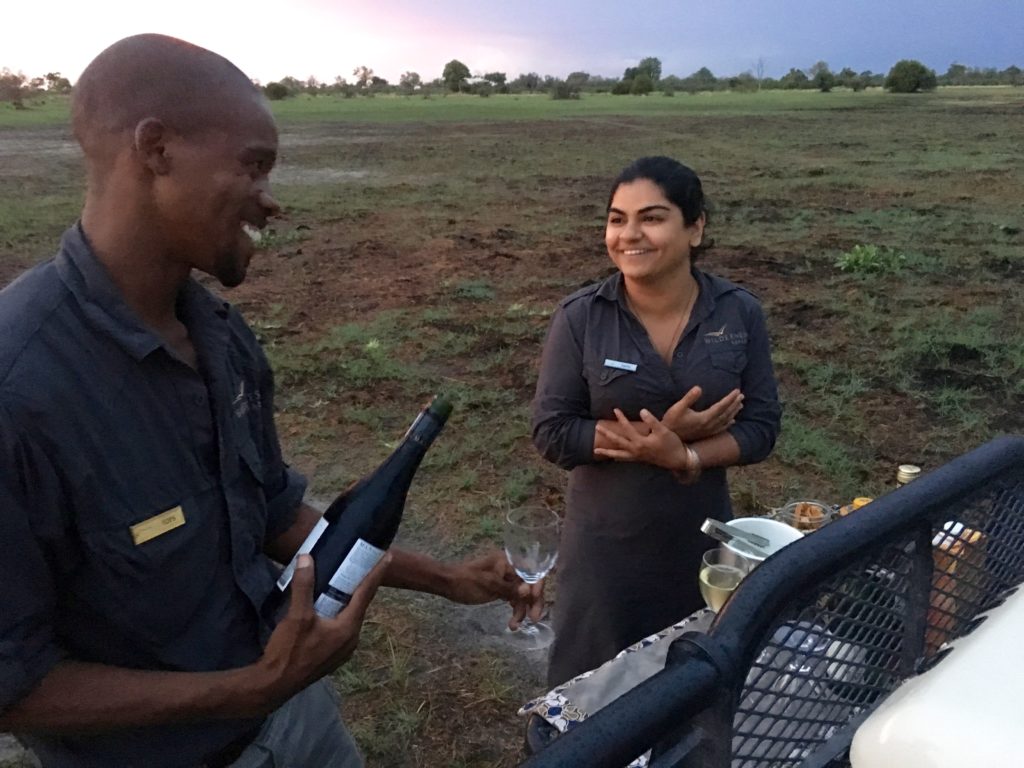
Tops offers Sarita a glass of Africa wine.
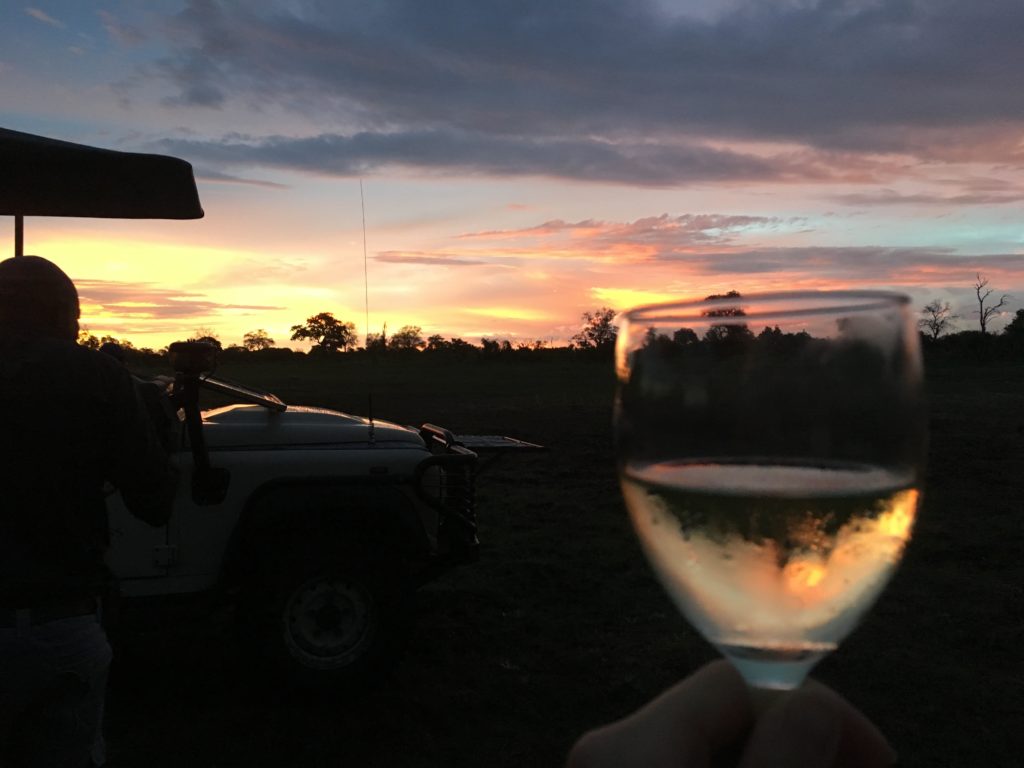
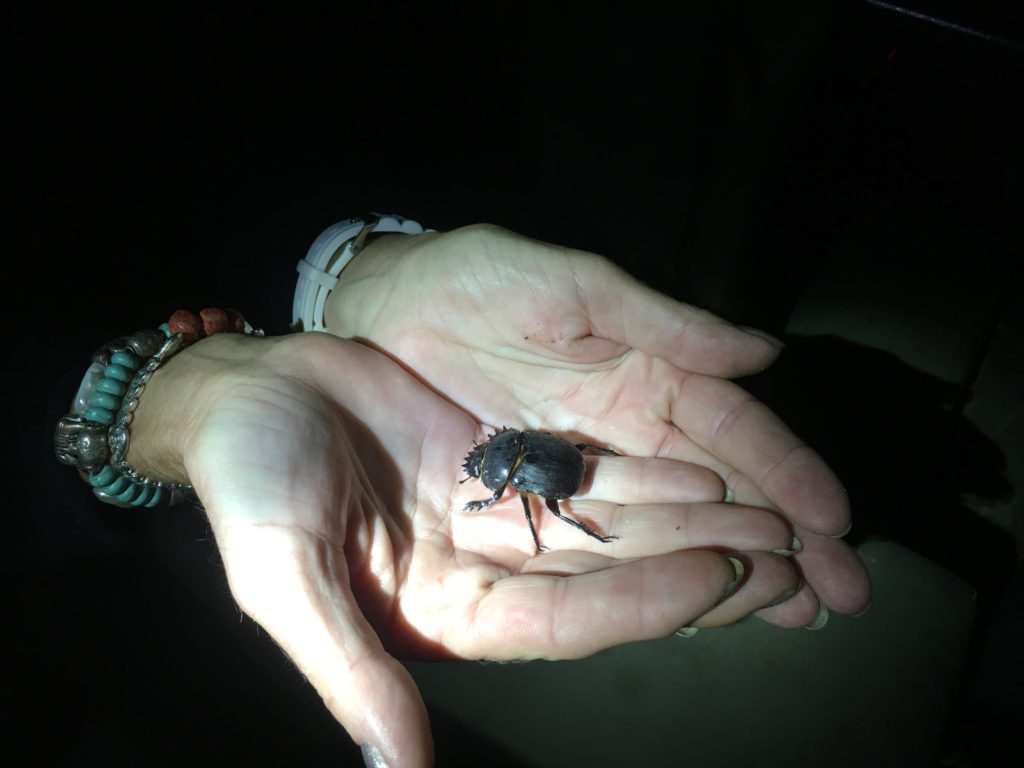
Eva holds a dung beetle to the light.
Unless an epic sighting kept us out late, we returned to the camp by 7:30 p.m. each night. A full course dinner and wine pairings began at 8:00 p.m. and we sat with the whole group, guests and staff. Wine and conversation flowed as we recounted the day’s events and stories of our lives back home. It truly felt like we were eating with family.
***
This story ends here! If you’d like to keep reading, head over the part 4, and be sure to subscribe to the newsletter and get immediate updates delivered to your inbox. For stories earlier in the trip, read part 1 and part 2.
As always, please share Woman Scientist with anyone you think may feel inspired!
Thanks for reading.
***
All photos taken by Allison Lee and Cynthia Cusick. Information obtained through personal conversation with Wilderness Safari guides.
Share this:
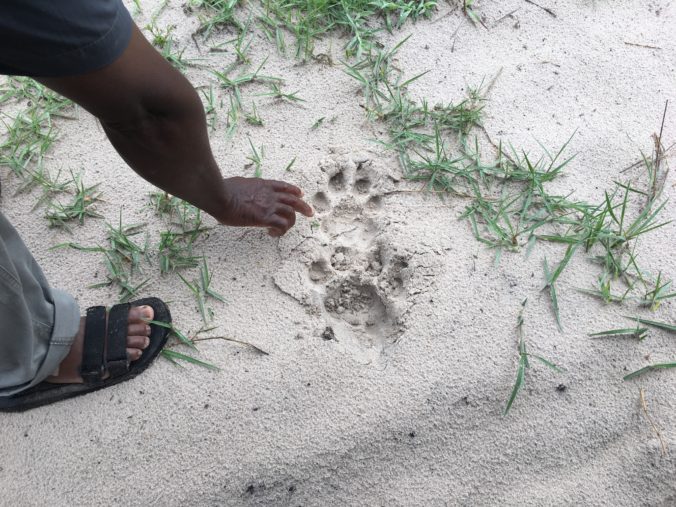
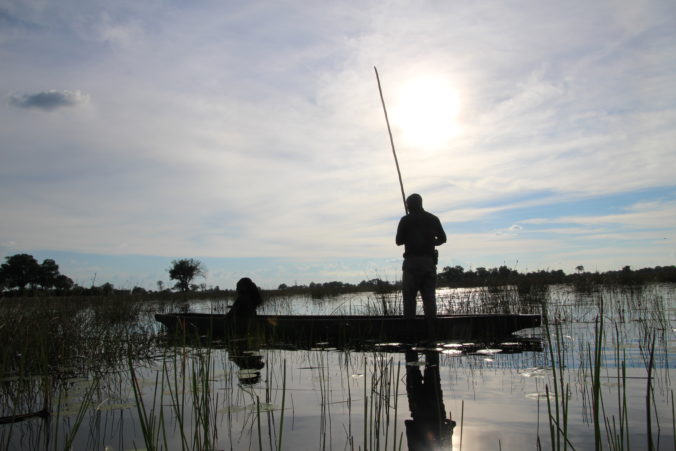
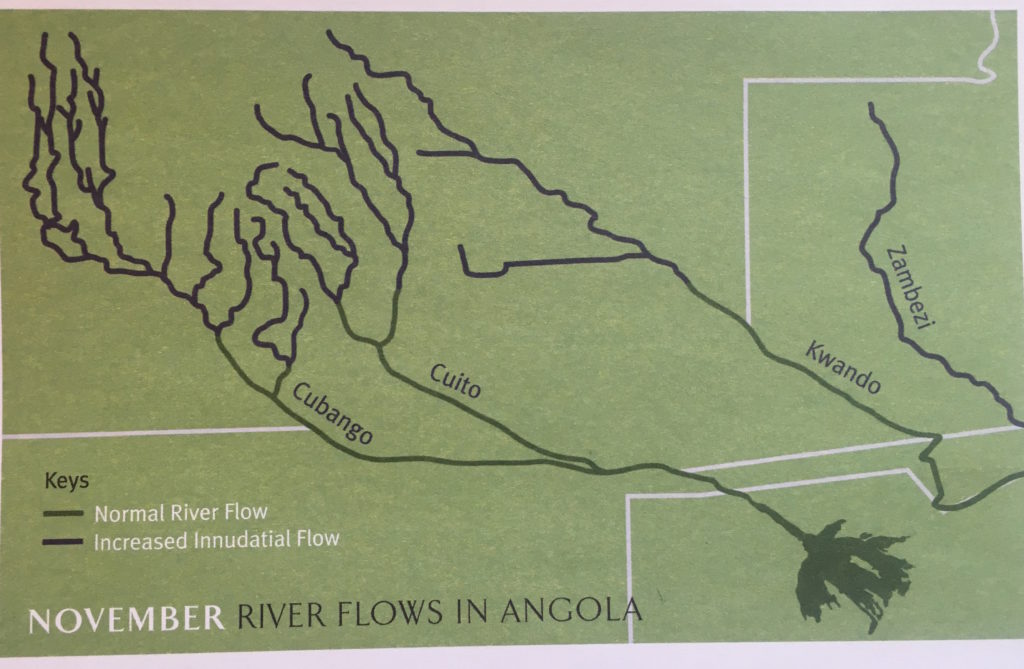
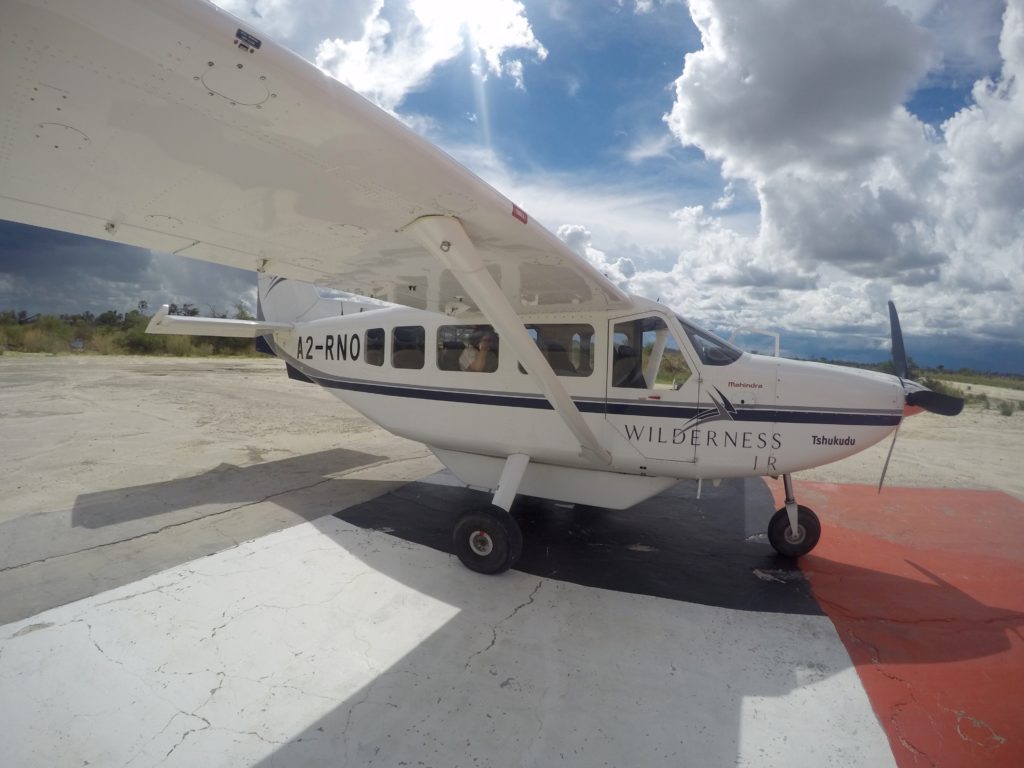
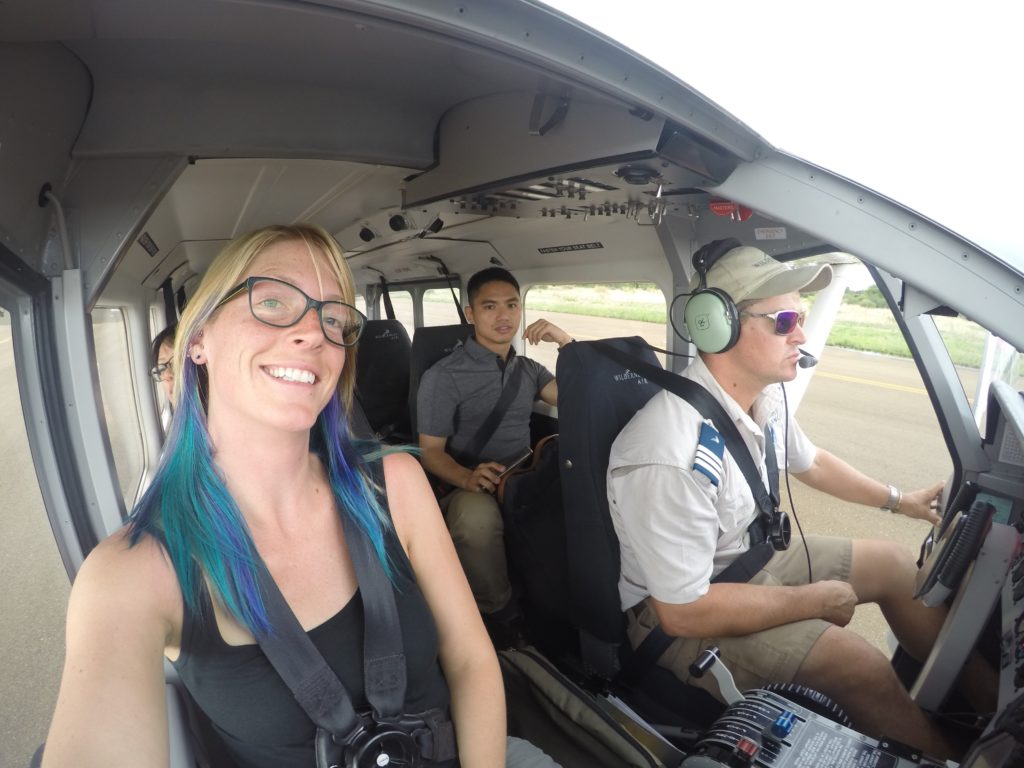
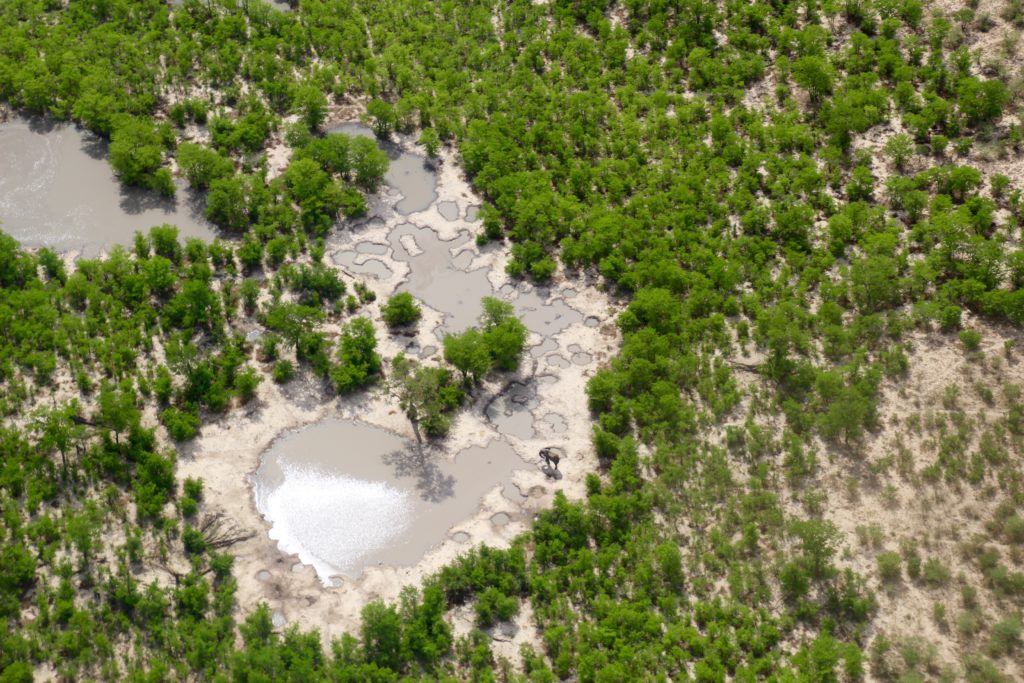
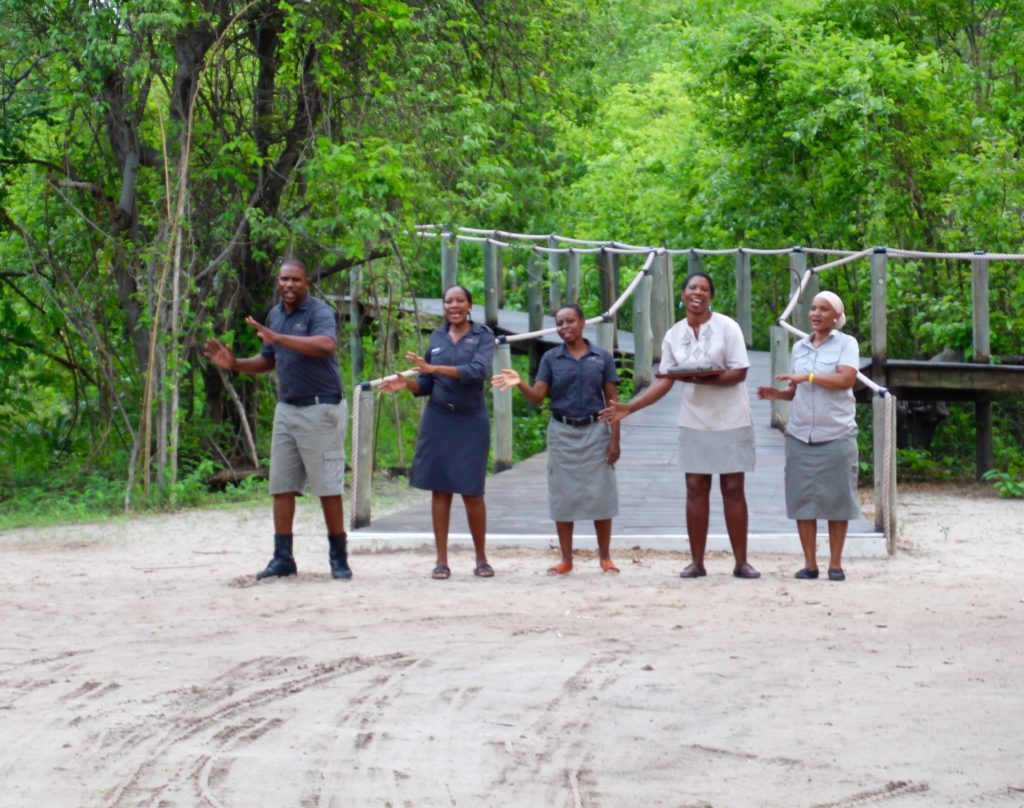
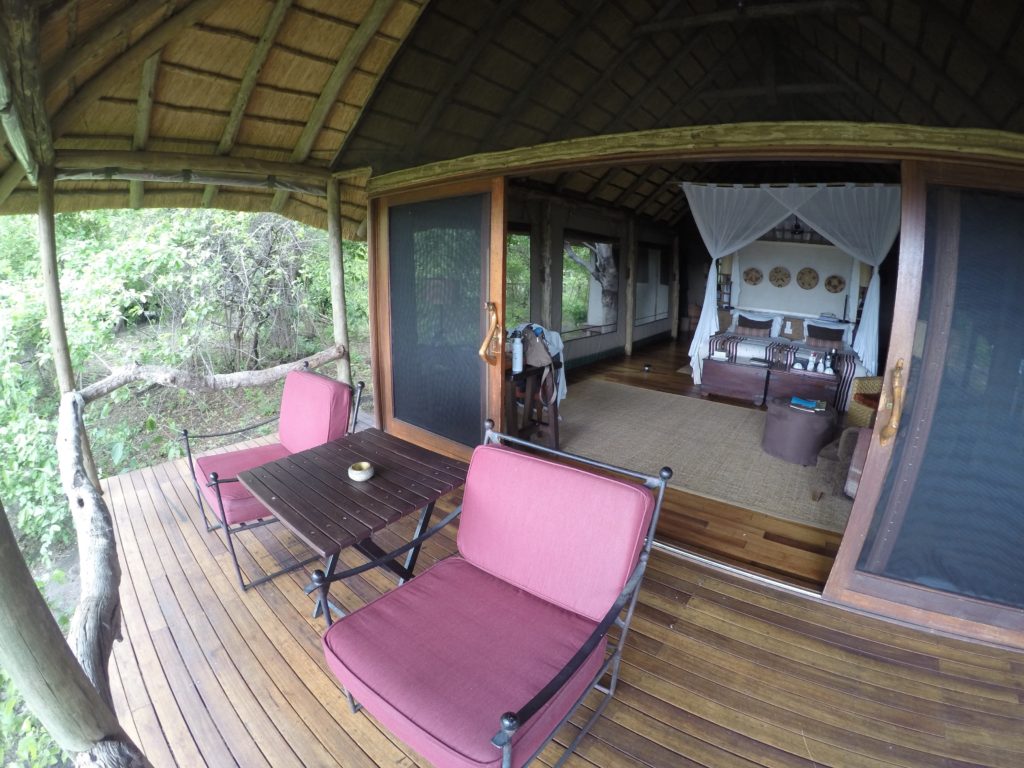
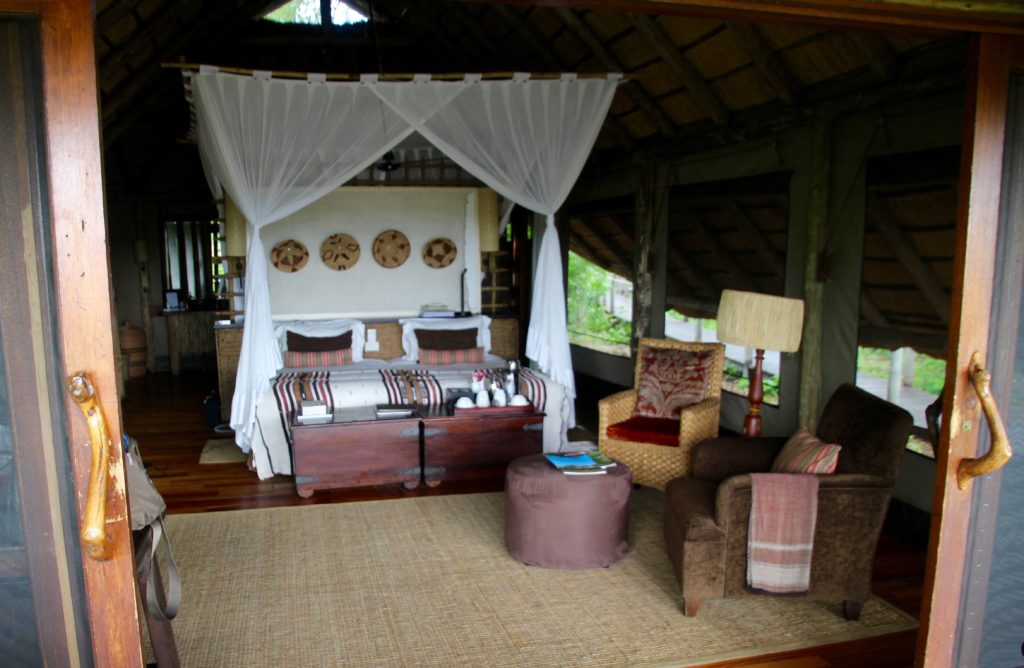
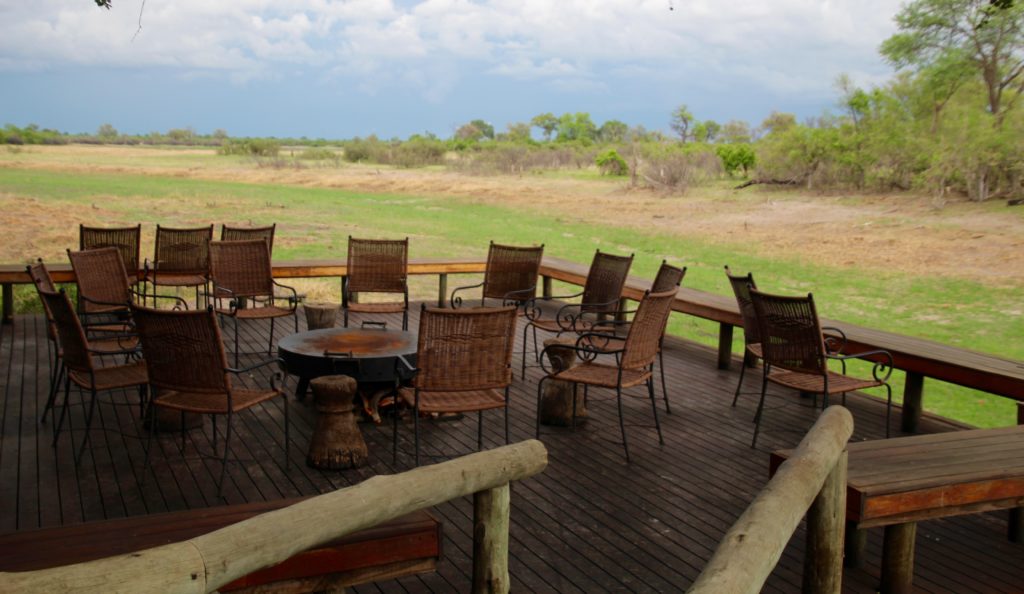
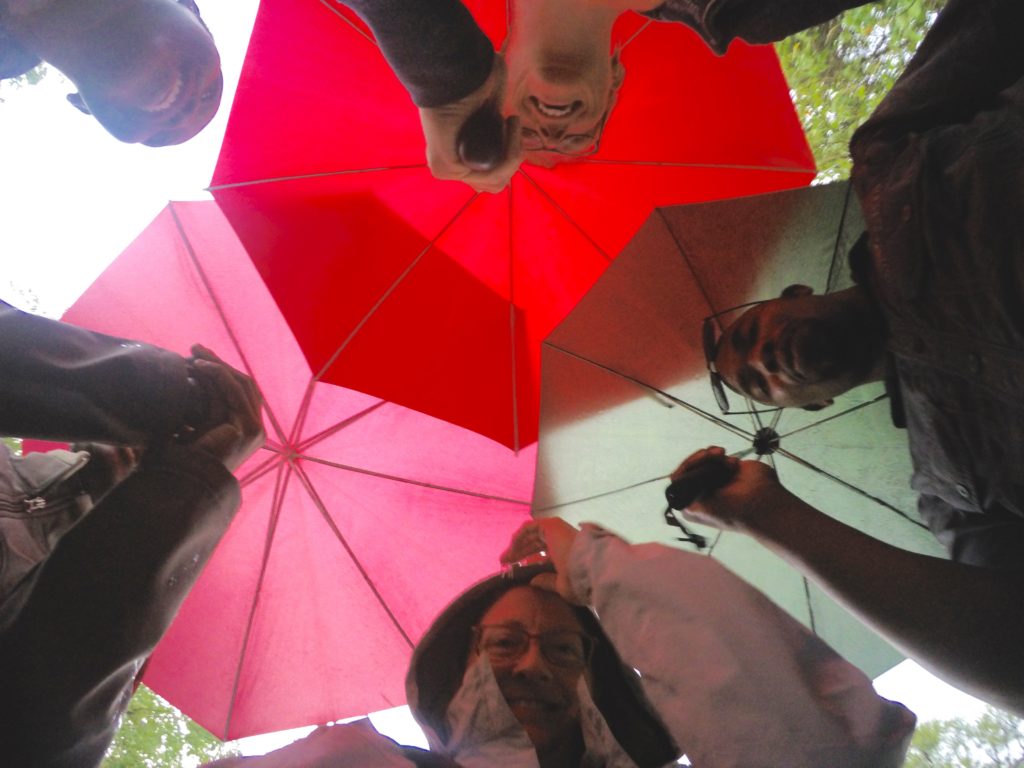
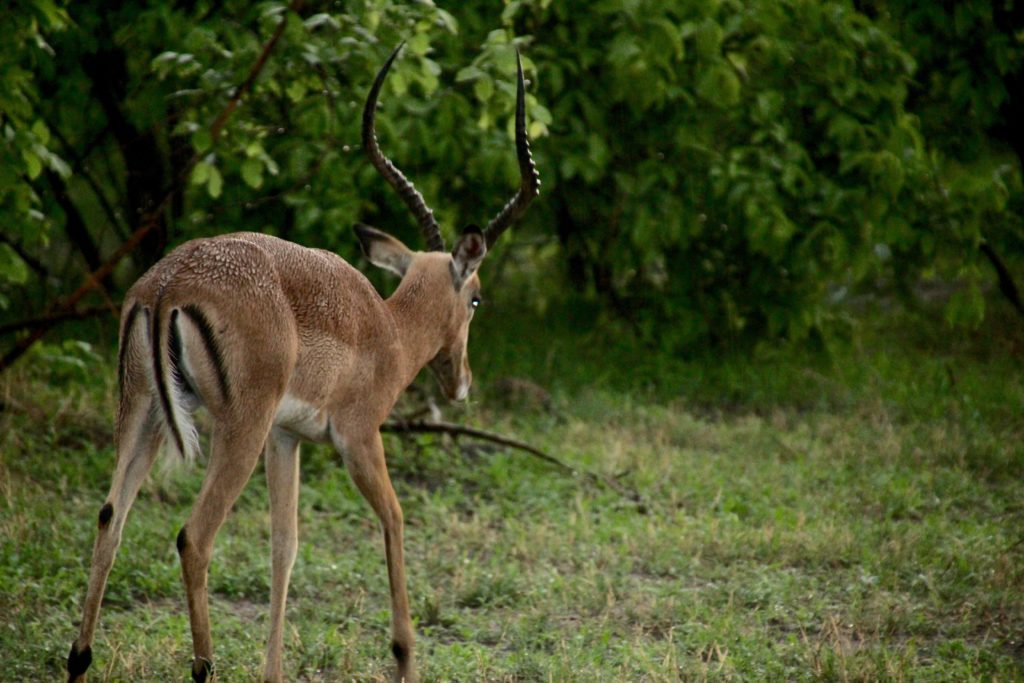
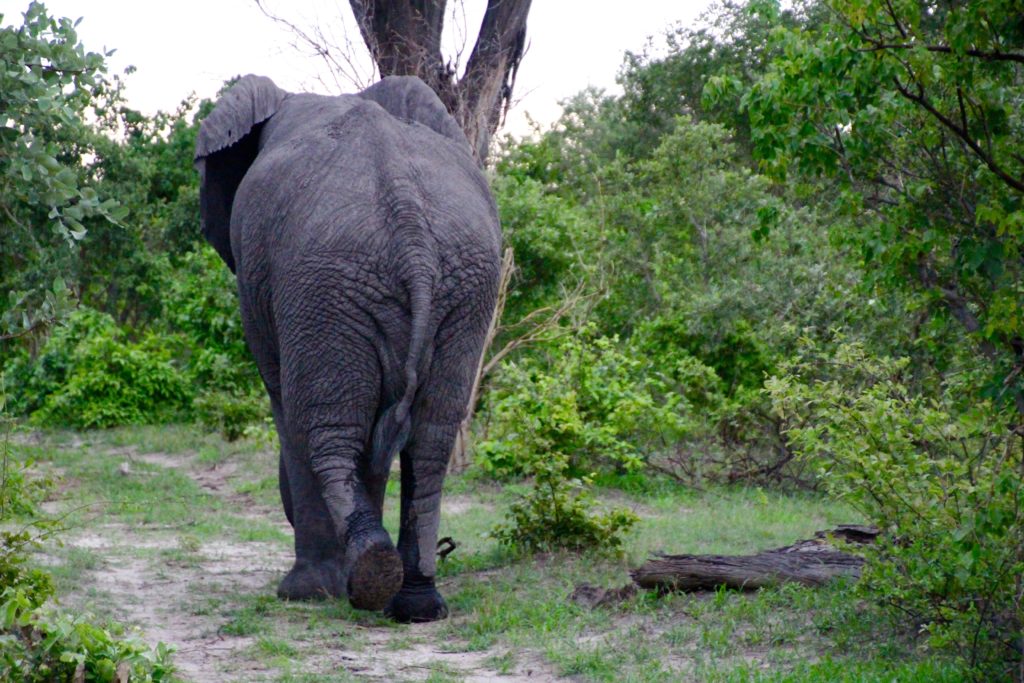
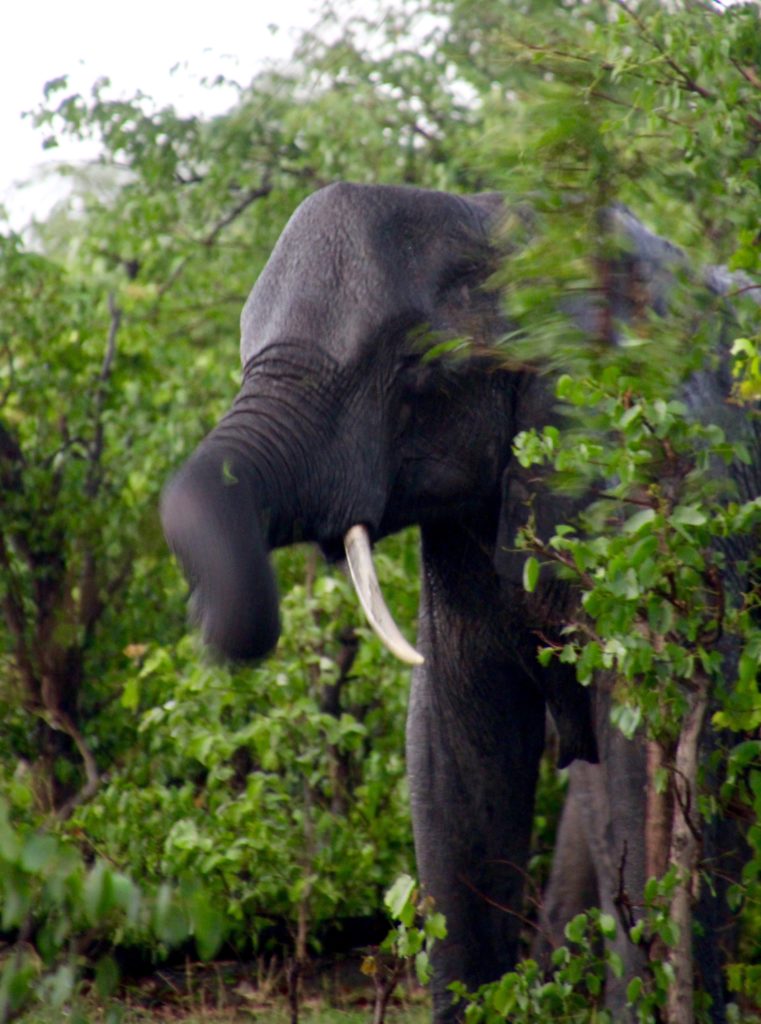
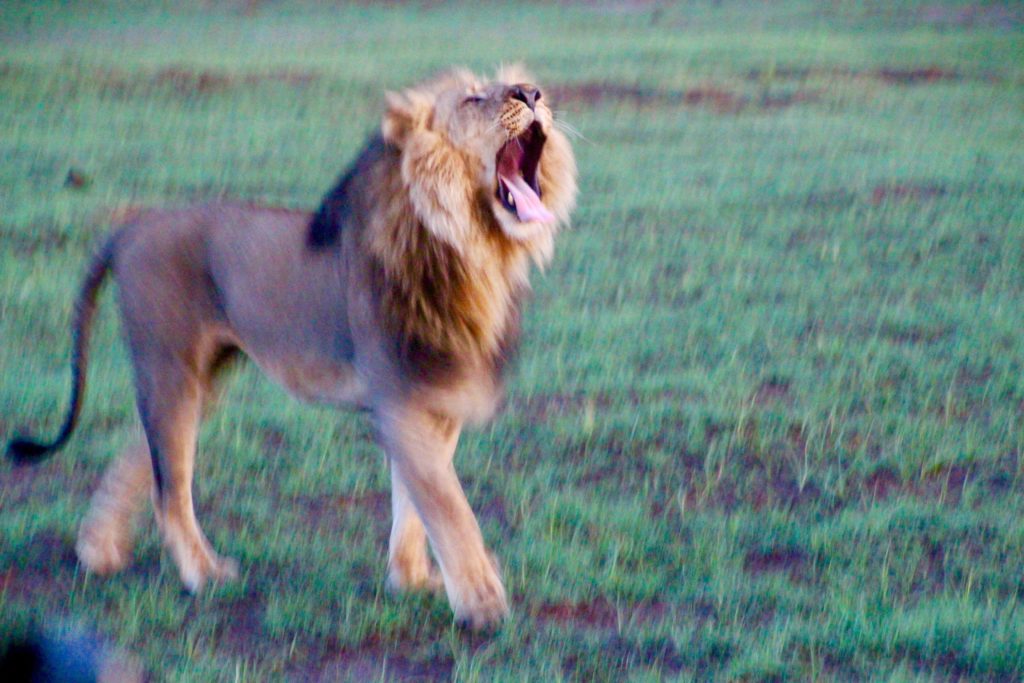
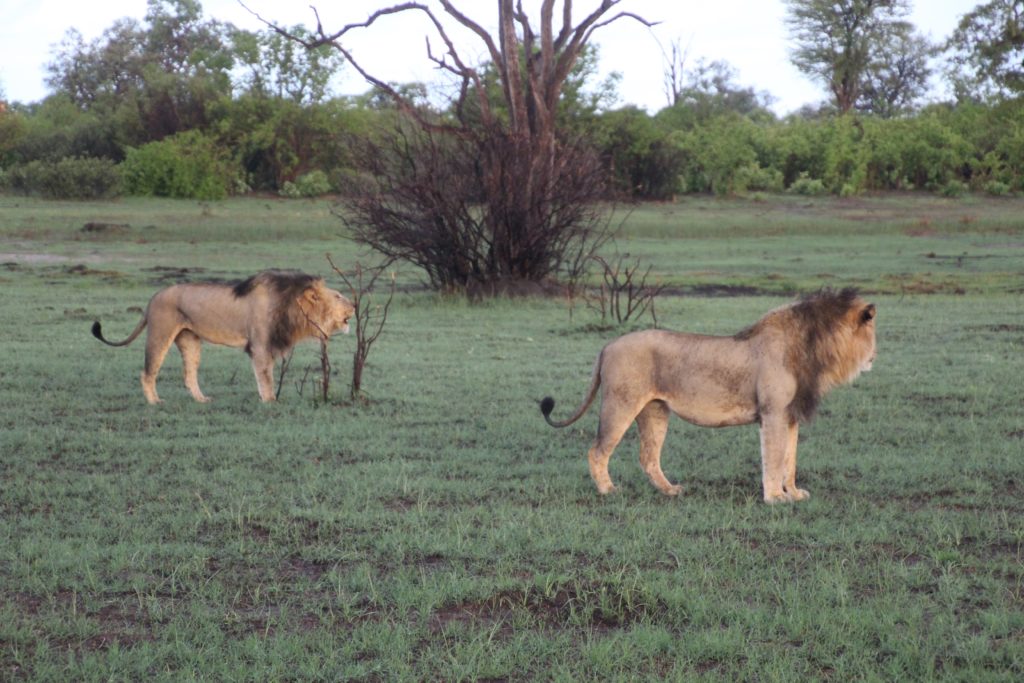
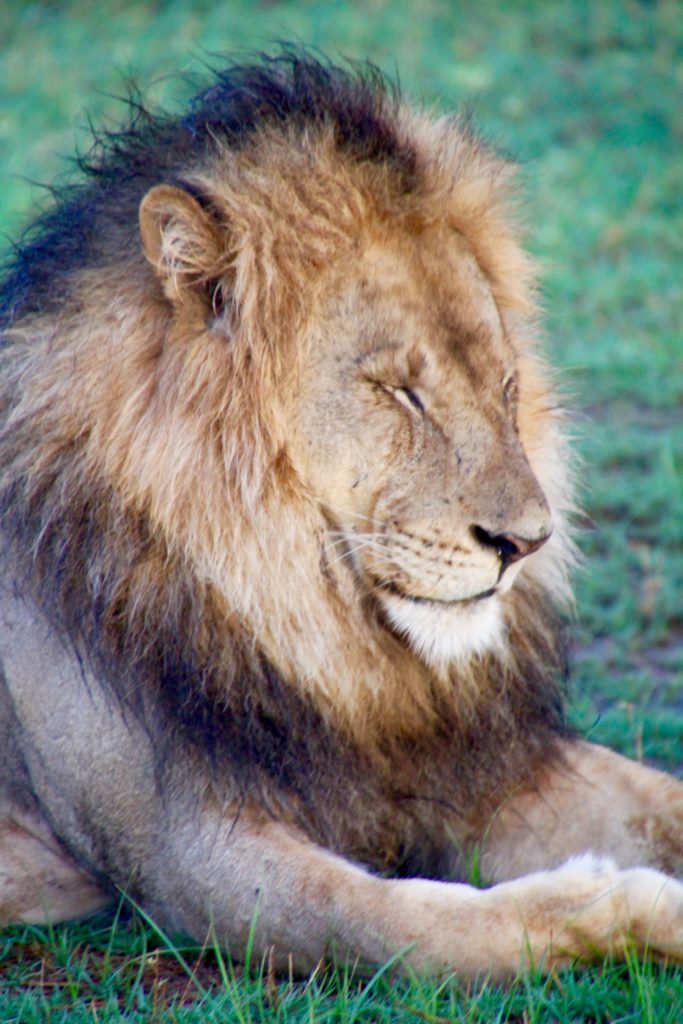
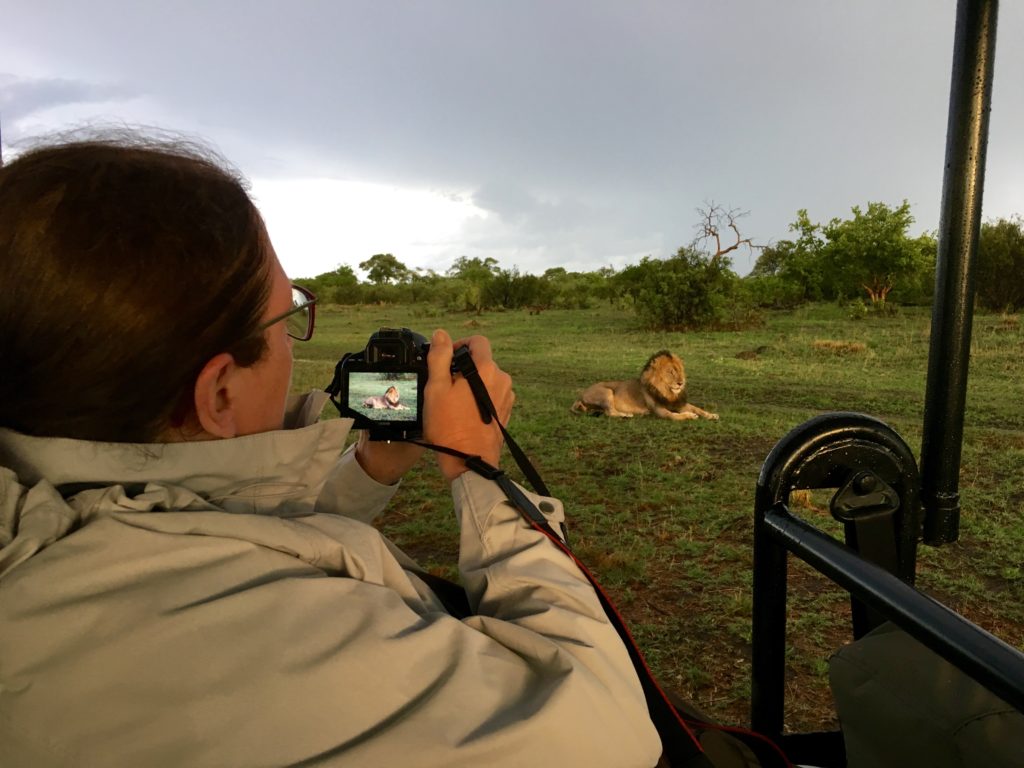
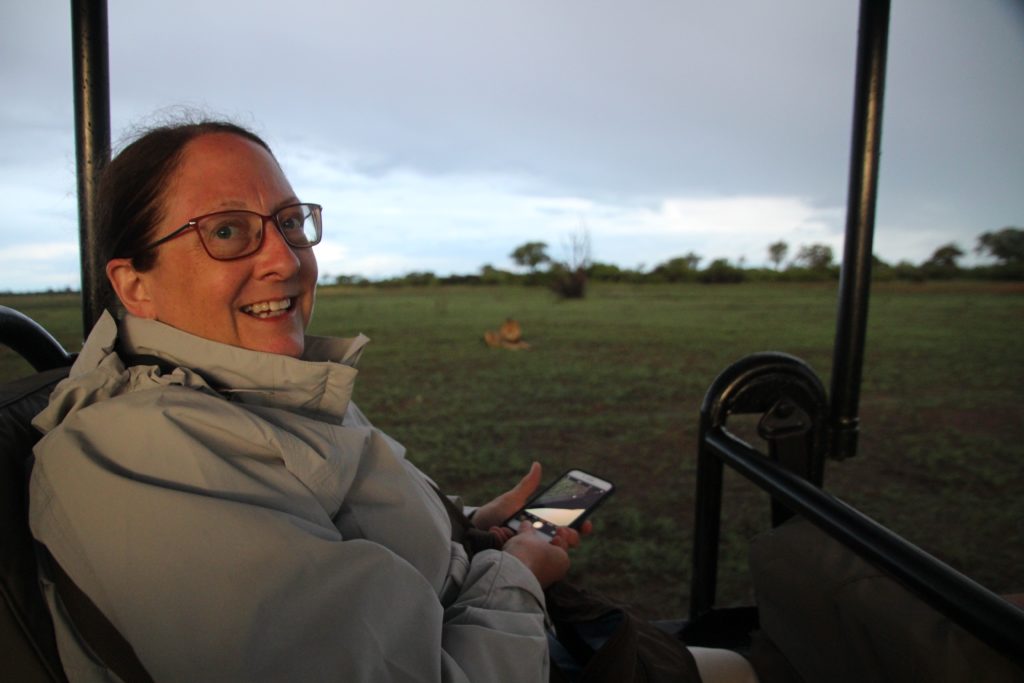
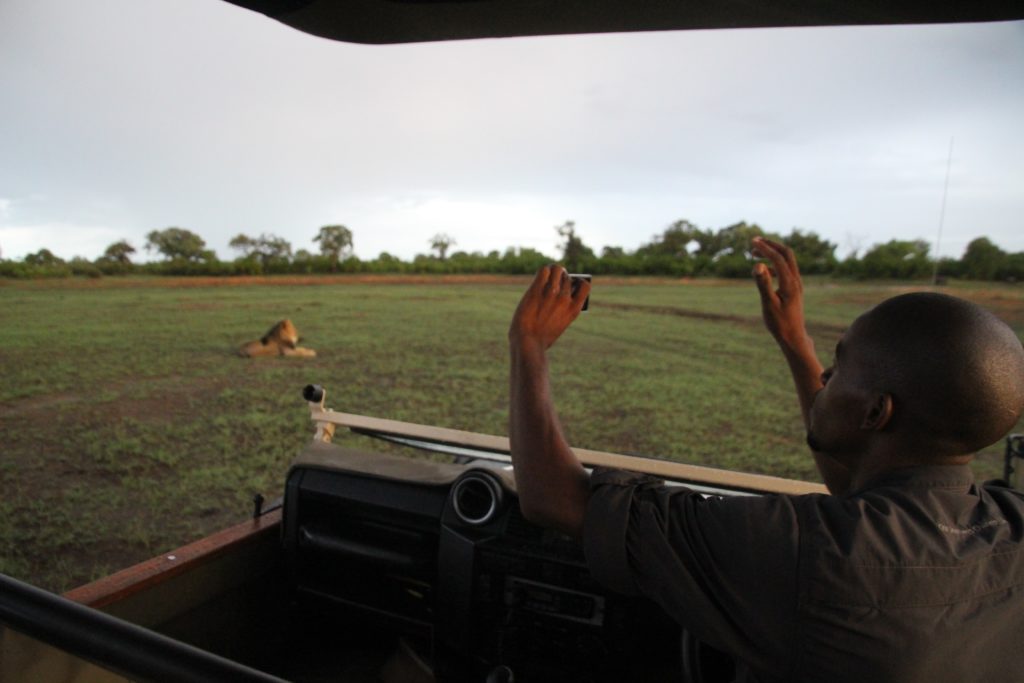
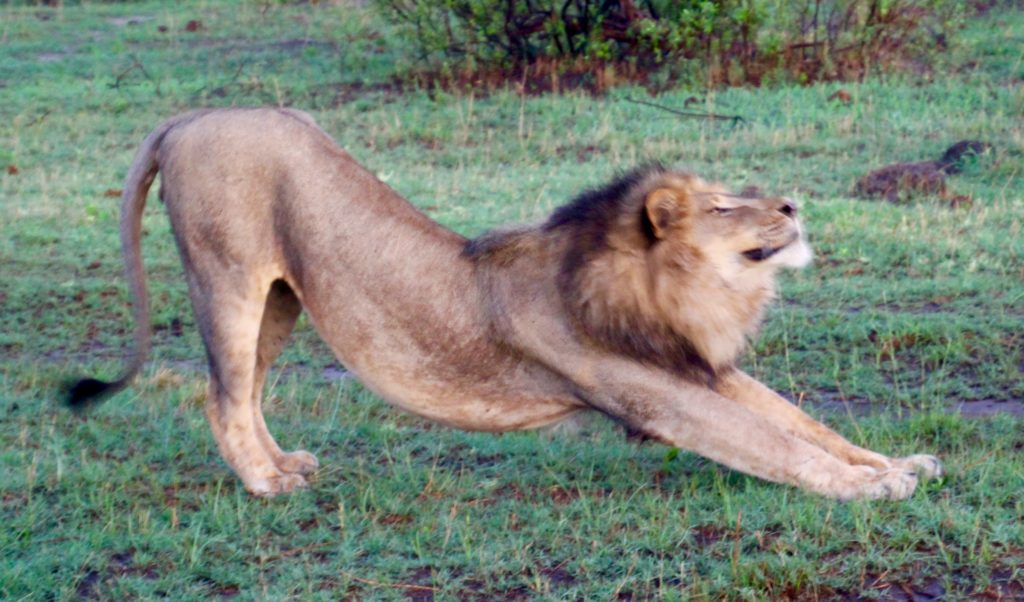
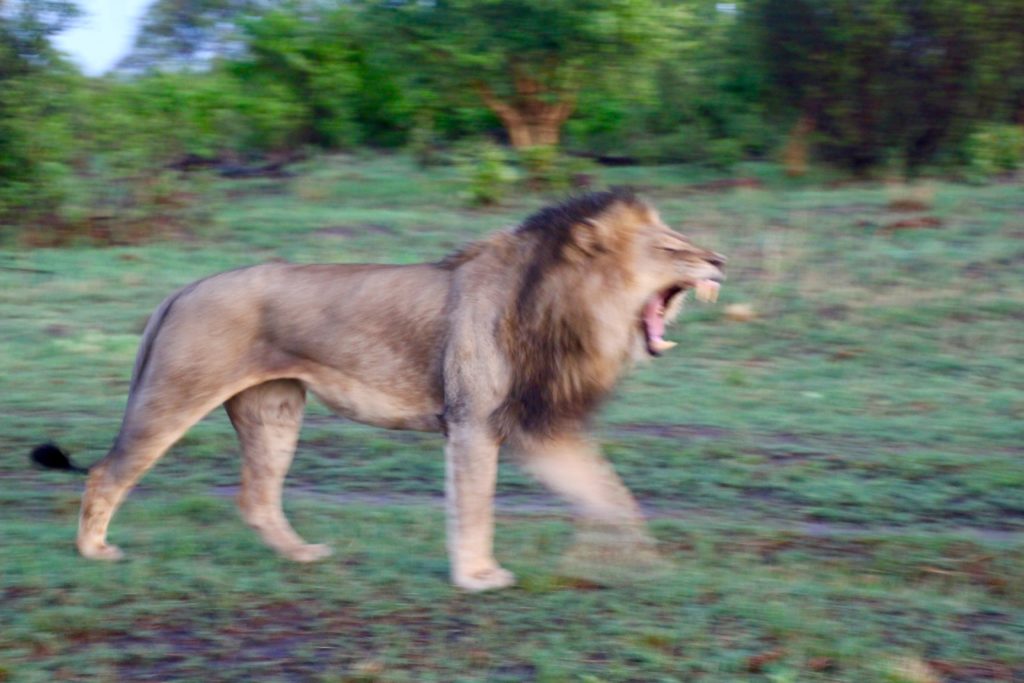
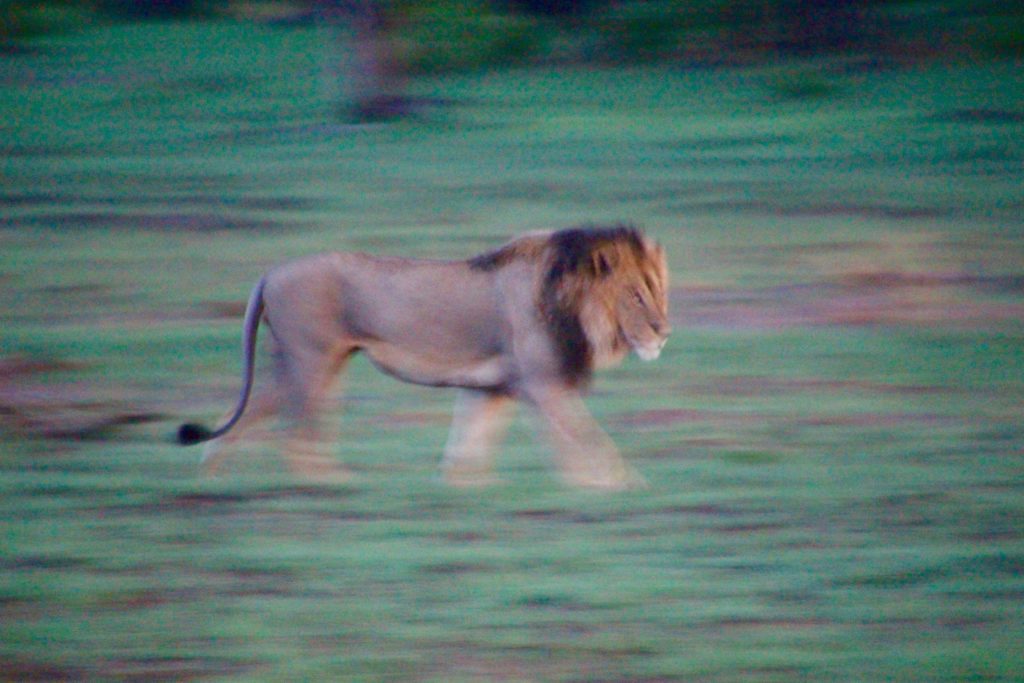
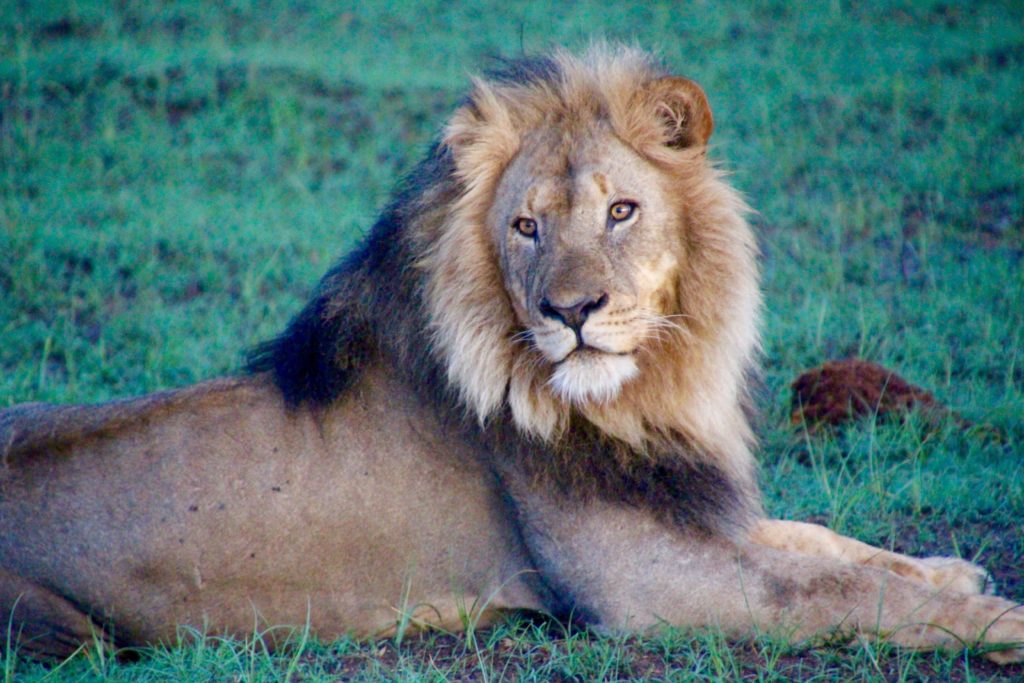
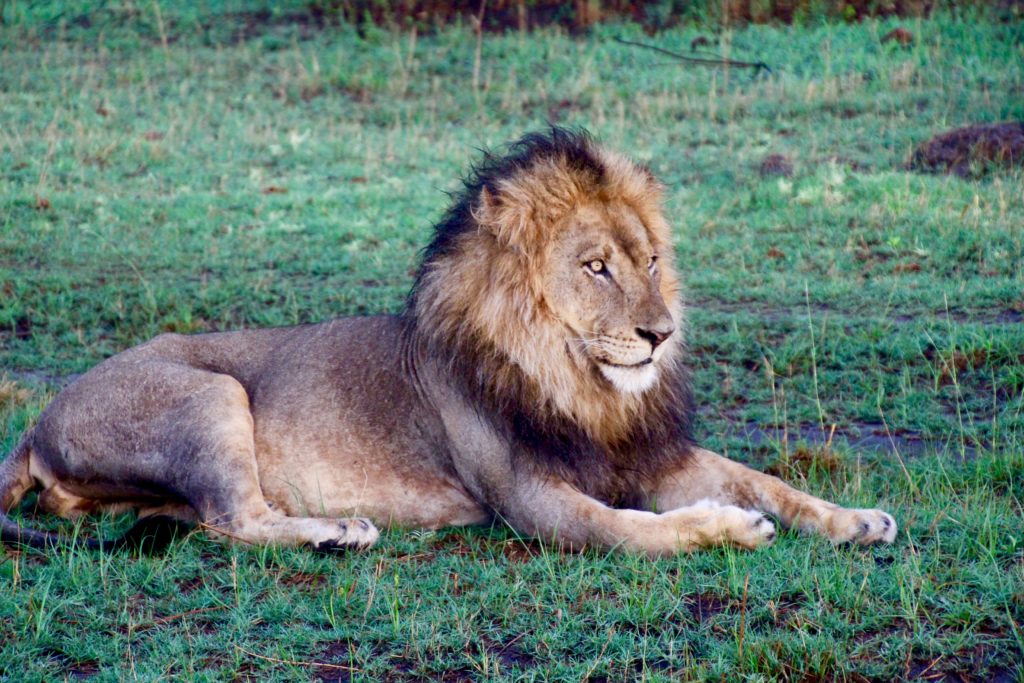
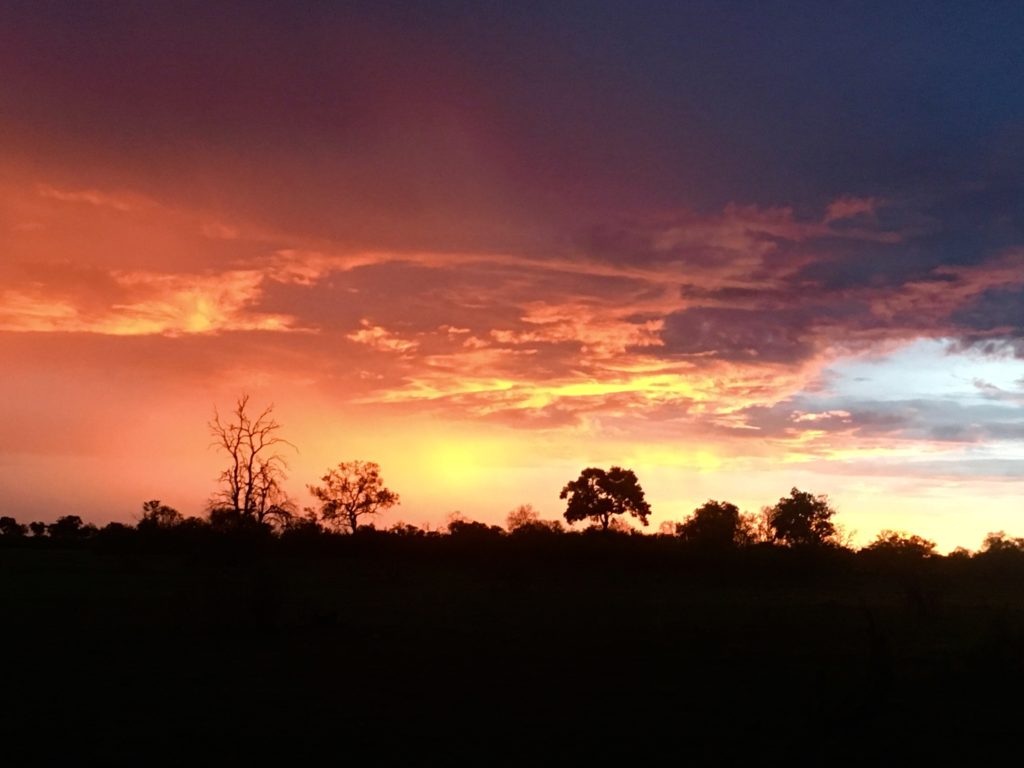






































Recent Comments